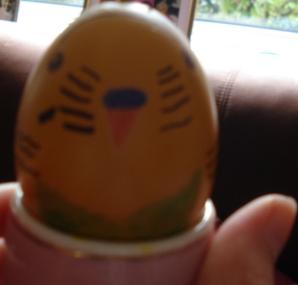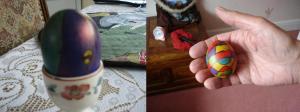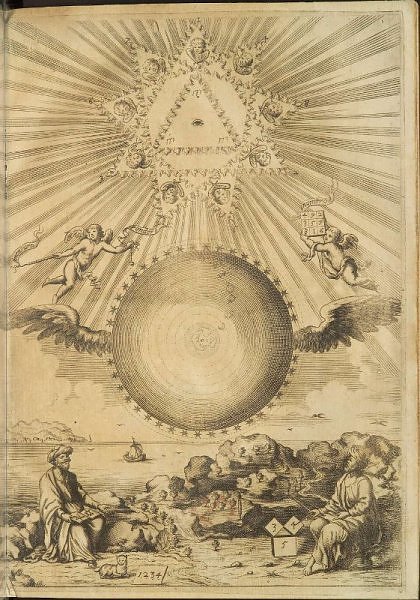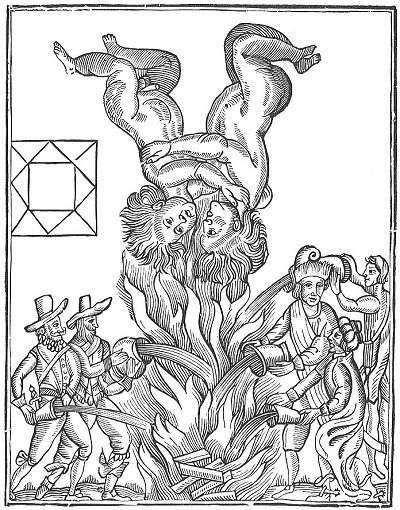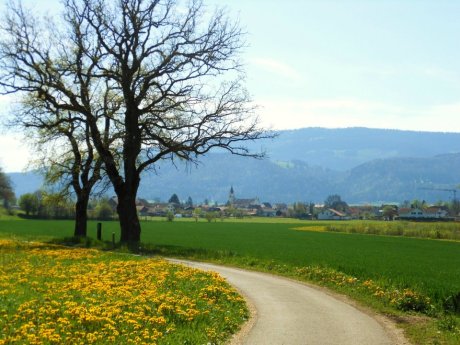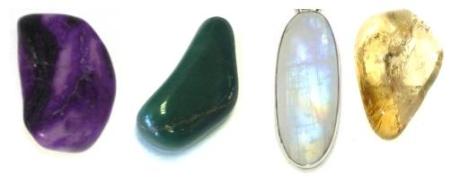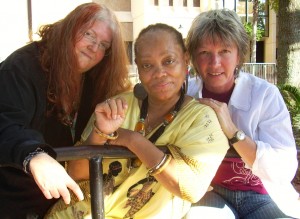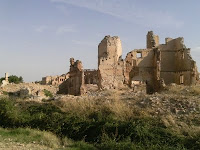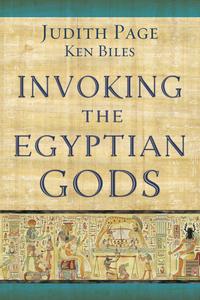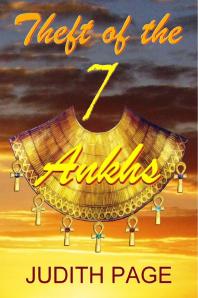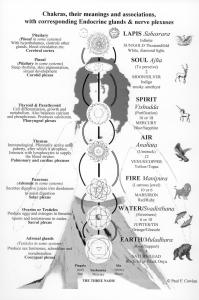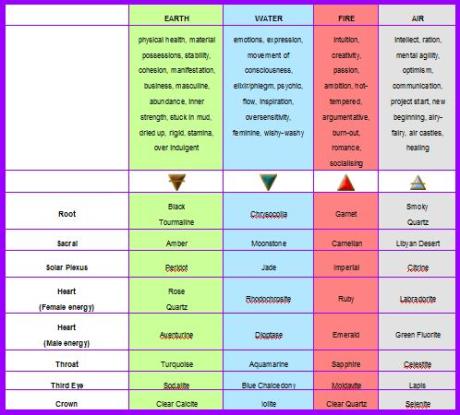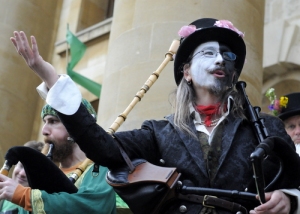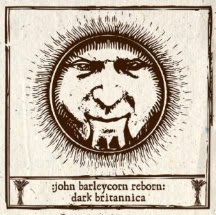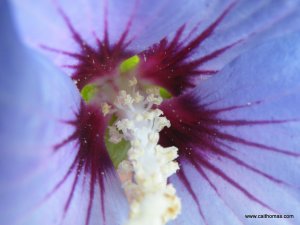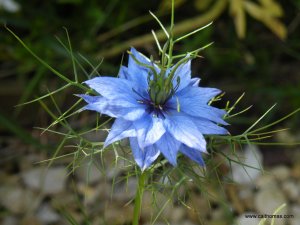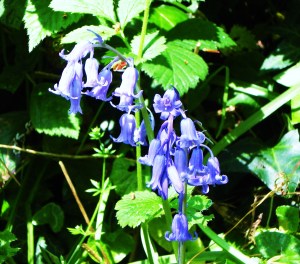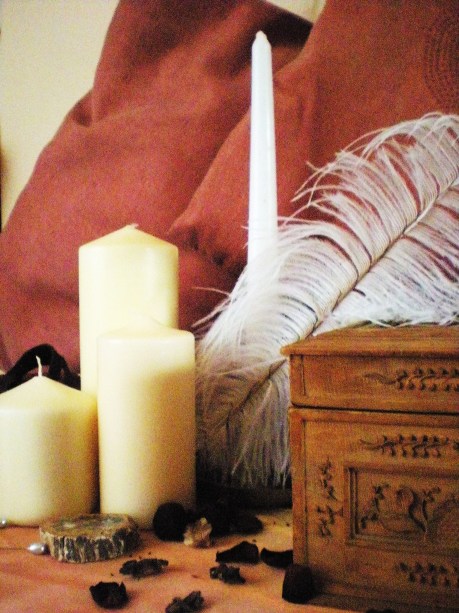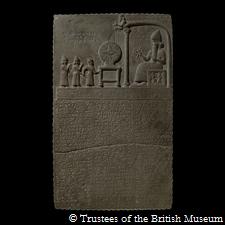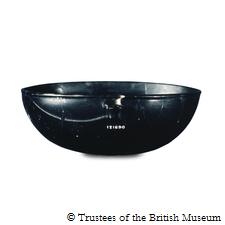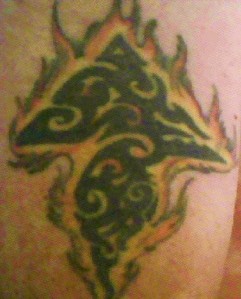The Autumn equinox seems to have crept up on us quickly this year, bringing with it a rich bounty of content in the Pagan Friends Webzine’s Autumn Equinox issue. Read on for some great features from Christopher Josiffe, Alex Sumner and Charles Vella, a selection of Autumnal poetry and some fantastic artwork and photography.
Interviews
An Interview With The Pagan Friends Forum’s Si
Articles
The Magic of the Earth By Alex Sumner
Modern Grimoire Magic: Folk Magick & The Solomonic Path By Aaron Leitch
Herbology By Jessica Howard
Selenite Meditation By Beth Holtum
Batty About Bats By Liz
Working With Boji Stones By Beth Holtum
East Anglian Scarecrows, the Crowman and the Pagan Origins of Saying “Grace” By Liz
Essays & Extended Features
Origins of Writing: Magic or Accountancy? By Christopher Josiffe
Regular Features
Mabon Week Moonlore By Liz
Should we take another look at the Gods & Spirits? By Jonny Blake
True Magick in a Virtual World By T. Fox Dunham
Tools, Tricks & Ingredients
Rosa Damascena – Rose Absolute By Suzannah Hill
Meet the Family – Tourmaline
By Beth Holtum
Personal Accounts & Experiences
The Travels of Charles Vella
Reviews
The Spellcasting Picture Book: Visual Tools For Grown-Up Magic 2nd Edition By Diana Raichel
Artwork
Artwork By Gaynor Lewis
Decorated Skulls By The Pagan Friends Forum’s Tas Mania
Photography By Cai Thomas
Cornfield
Corn Sunset
Longleat Bat
Floral Treat
Pink Skies
Photography By Nik
Untitled 1
Untitled 2
Untitled 3
Fiction
Lucy’s Tale By Logos Tartaros
Poetry Corner
Apple Time By Joan McNerney
September Song By Hedgewizard Erb
The Sock Puppet Poppet By Rebecca L. Brown
A Deserted Place By Linda Gibson
Butterfly BY Linda Gibson
Want to contribute to the Samhain issue?
Are you a budding writer, artist or photographer? Do you have something to say to the pagan community? We’re already looking for exciting new content to include in our Samhain issue. We’re interested in your personal anecdotes, poetry and short stories; if its interesting and relevant, we want it. For more information on how to submit to us, visit our submissions page. We’re looking forward to seeing what you’ve got!
We are now also accepting material for review and events listings for inclusion in the webzine.
The views and opinions expressed in this webzine are those of the authors themselves and do not necessarily represent those of the Pagan Friends team. Any advice given within articles is not intended to take the place of professional medical advice, legal advice or otherwise.
Back to Top

Cornfield by Cai Thomas
An Interview With The Pagan Friends Forum’s Si
What moved you towards RM? What age did you conduct your first full ritual and what was it’s intent? What do you see as the most positive impact of societies such as Golden Dawn? What do you see as the most negative impact?
Well I actually started off as a Chaos Magician, It would have been in the early to mid 1990’s and I had books by Phil Hine and Peter Caroll but nothing worked. I had heard of Al Crowley but didn’t know much about him; this was in the pre internet days, and I lived in the provinces, So didn’t have acesses to Occult Bookshops. I had picked up the Chaos Magic books from WHSmiths Mind Body Spirit section.
I met someone who was a practising RM who gave me my first Ritual. I would have been in my early 30s. He did sort of throw me in at the deep end with a Enochian Ritual. It worked.
The positives of the GD? Well its a bit like the positives of the Freemasons, fraternal organisations tend to help their fraternal brothers first so if your a member of the organisation then there may be a lot of help, but if your not a member then its all a bit secretive and closed shop. So saying, the general guiding principles of a lot of these organisations seem to filter down to the general populous through the years in a positive manner. Well you can argue this point, but I believe that to be the case.
So saying I think that certain Individuals have done a lot of good (and harm). And usually the same individuals, Crowley being one, His life and work are fascinating. But it requires a little bit of knowledge about ritual Magic to understand his successes and impact on Modern Paganism.
By the same token I see the secretive aspect of RM holds it back, A lack of transparency allows wild rumours to breed. And because RM is quite a “academic” style of practising Magic then it suffers from the same pitfalls as Academia.
Your interest in science as well as paganism has stuck out to me more than most things, is there a specific reason why you voice this? do you believe other pagans out there share your interests or perhaps people are starting to reinvent these ancient philosophy’s and cosmology in the form of a modern update?
A bit of a rambling answer to this one.
I don’t see why science and paganism have to be at odds with each other. Partly because most of the RM I practise flourished in the late 1900’s and early 20thC, in a era that we now take for granted, but how different would our lives be without people like Charles Darwin, Marie Curie and Thomas Edison? Without trying to sound like Dan Brown’s Angels and Demons. If you can talk to a modern day scientists “off the record” as it were then a lot of them are more open minded about esoteric subjects. On the record they have to justify their Grants and Budgets so they tend to be a lot more conservative. Which is a shame.
I trained as a Engineer, I have a logical mind. I can see RM as a kind of almost-science because it has a set of “rules”. Things like Gravity and Magnetism existed before we put a name to them. I see RM and Magic in general as a science that we just don’t fully understand yet.
It seems to me a lot of Pagans want to live in some kind of pre industrial society, don’t get me wrong I enjoy camping, cooking on a open fire and making my own bread, but wouldn’t want to do it full time. When we go camping its nice to come home to a hot shower and comfy bed. Hot and Cold running electricity and wireless internet are the benefits of Science. So I’ll embrace them. And as a society we don’t hold our scientists in high esteem either…Look up the Story of Alan Turning one of the fathers of modern computing, he certainly saved thousands of lives in WWII by shortening the war by cracking the Enigma Code. Yet was persecuted for his Homosexuality (that bits not mentioned so much in the modern history books).
Isaac Newton is remembered as coming up with the theory of Gravity. Yet he was always much more interested in Alchemy and wrote a lot more on Alchemy than he ever did on Physics. Watson or Crick? was rumoured on a LSD/Shamanistic trip when he saw the double helix of the DNA strand. Its just that some inventions of science benefit a lot of people, Its not science that’s the problem its Business and Economics.
Lets remember in the Greek, Sumerian, Egyptian cultures, the Magician was also the Scientist, There was still a Priest class that interpreted and charged the muggles payment for preforming magical acts. This is a point that the neo pagans tend to convinenty overlook.
If you Google Noetics then its very cutting edge Quantum physics and maths, But some of its theories are similar to the “Rules” of Magic that Magicians have known about for years. Its a case of the men in the white coats catching up with the men in the robes.
Did you find kabbala hard, and how has it helped you regarding magic?
Kabbala is a set of rules, Its a bit like a Map showing where many have been before. And just like following a Map there are things you can do. You can take short cuts across the land and stray off the roads marked out on the map but you can’t walk on water. Its a question of learning which shortcuts work for you.
Just as the early Christian Church was unified at the Council of Nicea into what we recognise as Catholicism today, the same thing happened to the different Judaic cults they were unified into one particular faith. I try and bear this in mind when working with the Ballast. Its history as well as its current incarnation.
RM isn’t Kabbala, Kabbala is just one strand. Once you get into RM then you find its a mix of different influences,
I would like to know what was the most successful working you’ve ever performed please.
That’s a tricky one to answer…most of my rituals are towards one goal, to be a “better” person. There have been a few life changing events one of the most successful was the circumstances in which I met Pen. I experienced a feeling like vertigo or falling and the feeling of being watched. I had done a ritual many months beforehand and it felt like the culmination of that ritual.
How do you handle negativity aimed directly at you; have you ever been on the receiving end of somebodies jealousy or other malice, or the victim of prejudice etc., and if so, how did you cope?
Most of the time I ignore it, These days I’m getting more verbal and argue back….My problem is I’m not very tactful or diplomatic.
On the interweb, sometimes people want the argument,they relish the attention, I know I’m not going to change anyone’s mind so I won’t give them the satisfaction of playing semantics with me.
In real life, I’m different I’m more inclined to patiently argue my corner and point of view but again if I can see in their eyes I’m not getting anywhere then I’ll back off, I’m not wasting my breath on them.
If someone wants to send malice towards me…then the gloves are off, I’ll use every trick and tactic I know including cursing them but only if their malice starts to affect me and mine. (Thing is its not so much other Pagans/Magicians who act like this, its Muggles who tend to be more negative towards me, and yes a muggle can curse, they just don’t know what they are doing). I cope by sending it back, sometimes with interest.
Have you a favourite method of protection?
Yes I preform the Lesser Banishing Ritual of the Pentagram on a regular basis, its a Elemental Banishing that is designed to clear the area.
Is there something in your collection of shinies/ritual tools etc., you feel you couldn’t do without? Has anyone ever gifted you something very magical?
Hmmmm, “Tools” I differ from a lot of RM’s in that I don’t always use a wand, knife, staff, ect, If I need to point I use my finger. I do have some decks of Tarot cards I would be very disappointed to loose. And I was once given a black scying bowl but to be honest I haven’t used it….yet.
A more in depth answer is that because certain items like Daggers and Wands have such a symbolic meaning they become specialised. Great for certain purposes but not so good for others.
Have you a favourite (Pagan) author? and a favourite book?
Thinking about it its got to be Crowley, I don’t agree with everything he did and said, and I certainly don’t follow everything he wrote or try and emulate him, as many do. But for the sheer amount of information he put down on paper you can always find something pertinent in his books. As to which book? That’s a toss up between Magic in Theory and Practice, Magic without tears and Book 4
A mentor? somebody who taught you a lot, who you look up to?
I did have a mentor, He did teach me a lot, he threw me in at the deep end, I had some practical successes and results which make it a lot harder to deny the existence of Magic. Do I look up to him? No I don’t. He knows more than me, and probably always will because he’s been practising a lot longer than me. But friendship wise he let me down. So I don’t have anything to do with him any more.
Is there a place you like to visit often for a particular reason, do you get the feeling of “good” places, and “bad” places?
I like beaches where the element of water meets the element of earth and its always in constant flux, there’s a energy there that I can feel and like to tap into. Though that’s not a RM thing, its much more a Witchcraft thing.
Yes there are good places, places that are tranquil and relaxing and bad places with a sinister atmosphere, There’s a small church we visit a few times a year which is very spiritual. Yet 300 yards away is a tower which most of the time you can feel something “nasty” watching you.
Does the weather affect you, or the stars, or storms, etc.
The cycle of the moon certainly affects me. Not too sure about my Magic, but certainly my moods and energy levels and so does the weather, I get headache and irritable before a storm. But again that’s maybe more of a personal thing than a RM thing. Common sense dictates I wouldn’t attempt a complicated ritual when feeling “pre storm” because I wouldn’t be able to concentrate enough.
Again RM is usually preformed indoors in a temple or sacred space. Very often the beginning parts of a ritual are to cleanse the area and bring the mind into focus as not to be influenced by external forces such as the weather.
Have you a favourite element?
Yes Air, its the easiest and most effective way of getting things done…though not as strong in some ways as water or fire.
Does any of the 13 full moons or the 8 esbats have personal significance for you? How do you celebrate the wheel of the year as a rule?
Yes Beltaine and Samhain I tend to celebrate in my own way, a fire and a small meditation. The rest of the year, not so much.
Have you ever had a familiar of your own?
Nope, didn’t even have pets till I met Pen.
If you could turn back time, would you change anything?
On a personal level? No.
Don’t get me wrong there are things I have done that I regret, but changing them would change who I am now, and I’m happy with who I am today. Plus I’ve read enough sci fi to understand paradox loops and wouldn’t want to get stuck in one of them.
If you had a time machine, who would you visit and why?
I wouldn’t want to change history, the old “Killing Hitler might prevent my Grandparents meeting so prevent me being born” paradox again. I’d certainly like to go back and observe events, but that’s for my own satisfaction. And would just observing events be any more different than watching them on TV? Plus as soon as we had the technology to go back and observe then we would change anyway-hopefully for the better. Because then we would know that we could be observed too.
Seeing that you live with a witch how do you find mixing the CM with craftwork and have you taken any craft practises and added them to your CM workings?
Well there’s certainly a influence. CM is not “One Path” although it may appear like that to someone on the outside. There’s a tremendous mix of Enocian, Hermetisim/Egyptian, Goetia, Kabbala, Zoroastrian, Eastern Practices such as Yoga and Buddhism/Shinto/Taoism. I suppose what most people see as RM is the Work of the Golden Dawn and O.T.O. So why not add a little Witchcraft into the mix.
There’s also the Argument that Crowleyghost-wrotete GeralGardner’sr’s ritualWhetherther believelieve it or not, a lot of the 2nd and 3rd degree Gardarian ritcertainlytanly haCeremonialonial feel to them. Alex Saunders used Solomonic and Goetic Magic. So there’s a influence there. I like to think the Influence can go both ways. The line is very blurred in the area of using magical incenses and oils, which particular path used them first? The Cunning Woman in the village making oils out of what she had to hand or the Ritual magician making a oil from instructions written down in a dusty old grimoire? Its a chicken and egg situation to me.
As far as taking craft practices goes, Well you know I’m quite happy to practice RM outside, on a beach.
Although we are both classed as Pagans there are huge differences in our chosen practices, its never been a issue as we have always respected each others Path.
My take on it is this; ritual Magic is a mix of many different styles so why not utilise a little Witchcraft too. Here in the Cardiff area there are some RM’s who also practise and have a interest in Voodoo.
What’s for dinner? (and can I have some)
What’s for dinner, Well it will be something home cooked, made from fresh and cheap ingredients, 3 out of 4 of us in the family are meat eaters so I’m used to catering for a vegetarian (well Piscatarian-he eats fish). I don’t believe in freezing Meat or Veg unless I have to, so I make a almost daily trip down to the supermarket. I would love to shop at farmers markets and buy more organic stuff but we are on a tight budget so it has to be the supermarket, I’m a real bargain hunter and will always check out the reduced price section, if there is something cheap there then that will become the basis for the meal. We don’t do takeaways, because of the way we eat a takeaway makes us both feel uncomfortable if not ill and I can make my own Chinese, Indian or Burger and Chips meals. If on the rare occasions we eat out then a quality restaurant doesn’t make us feel ill. But the cost of the meal may make me feel a bit faint
And yes we do like to cater for others, Just give me a little bit of notice please.
Would you ever consider a path as anything other than an RM?
Well, never say never but it would have to be something pretty extreme to make me take up another path. I am a bit of a dilettantetetete (sp) there’s so much scope within RM to study different disciplines, I can split my time between, the studies of Alchemy, Planetary Magic, Kaballa, Enocian and Goetic. In my experience the most interesting people that I’ve met within the RM world have been those who haven’t slavishly stuck to one path at the exclusion of everything else.
Do you have a patron deity?
Sort of; I do/have worked with Odin a lot. but more in his guise as a Magician, and the master of Magic than as the Norse Allfather. I don’t work with the rest of the Norse Pantheon, just him.
Does that make you a heathen or an Odinist?
In my way of seeing it neither. I don’t follow all the “rules” of the heathen or Odinist creed. When a CM works with a god, its a different kind of relationship. Its more a relationship of equals, symbiotic. He helps me and in return I help him. Its not a grovelling “I’m not worthy” kind of relationship but its more a one on one kind of thing. That’s not to say I don’t respect him. He’s taken from me, blood and flesh at times
Interesting… when did you first start to work with Odin?
Odin has always been a god I’ve been fascinated by, I read 8 days of Luke when I was 11, I always see Odin in other figures, like Gandalf and Dumbledore not just physically, but in his attitude. Especially in the last hp where it turns out Dumbledore has his own agenda
Do you work with Odin in any other aspects as a multi-faceted god?
No. I have given that “all gods are one god” a lot of thought. and it may be true to say . Archetypes may resemble each other
When you work with Odin and then say Mercury who shares a lot of common characteristics, you ‘know’ they are different. its a bit like saying ‘all goetic demons are aspects of the devil.’ which isn’t true
Have you ever felt tempted to talk with Odhinn’s allies or compatriots, such as his sons or wife?
Nope. none of them………interest…(poor choice of word) me when i stared in RM one of the thirst things i learnt was the whole sphere of magic was open to you, Norse, Greek, roman, Caribbean /voodoo, Japanese, Chinese and you work with whoever and whatever is the best fit for the job
Okay, so have they ever tried to call on you?
No, never been contacted by any to the Norse Pantheon……maybe Odin protects his own he is a jealous god the way i see it. the odin i work with is the wandering shaman, the seeker of the runes, the trickster. not the Allfather, i work with him before he became the one who sits in Valhalla-in a earlier part of his history, if you see what I mean
How has Odhinn shaped your “path” through magic, life and so on??
Well, like i say he’s taken blood and flesh, he taught me some very harsh lessons. taught me that magic wasn’t a game though it is best approached with a sense of humour. but i won’t dedicate myself to him, i work with ‘bigger’ things like the enochian angels and nastier things like the goetic demons too
Have you, or would you ever turn down Odhinn?
Would I turn him down……that’s a tough one to answer…all i can say is i haven’t…yet. but then again he’s never let me down if he let me down….didn’t keep his end of the bargains…then probably yes. sometimes it does the gods good if you have a scream and them and loose your temper with them it kicks them in the ass and makes them take notice
How does Odhinn fir with the other things you work with? Some Pagans, Heathens especially would frown upon you for not being strictly “purist”
I think Odin doesn’t want – pardon the pun. blind followers. I’ve had ‘discussions’ with heathens about this he’s fine with it being a RM, a lot of it is finding and using what works best for what purpose. Odin is good but he has his limits. he works best (with me) as a ‘teacher’ I don’t call on him for curses/revenge stuff like that. Probably because I don’t see him like that, because i don’t see him in his Parthenon if you see what I mean
Do you adhere to a “religious” path within your workings with Odhinn as an added extra?
That’s a tricky one to answer….some of the CM stuff is very religious-lots of Egyptian gods being called and spells that sound like Psalms and Prayers some of it isn’t…..planetary magic isn’t religious sounding at all planetary magic is…well its almost like electrical circuits and scientific sounding planetary magic is the basis for the sigil side of magic in my humble opinion
How would you say you perceive the universe? Did it change after “becoming” Pagan?
It didn’t change after becoming pagan…..but it really changed for me when i started working through the enochain watchtowers I’m still not sure what being a pagan is i’m still not sure what being a pagan is where being a CM is much easier to define how do I perceive the universe…..as a mix of planets/astronomy, a physical edge to the universe that we can see and all that stuff Brian Cox bangs on about but also as energy energy and vibrations, cosmic winds, things like that
Well, that pre-empts my next question – “how would you define yourself?” so, how did you “come to” be a CM?
How do i define myself….on forms I put pagan, but I call myself a CM or a occultist there are some ‘pagan’ things i don’t subscribe to so pagan for me is a umbrella term, like a Baptist calling himself a Christian
Interesting, what sort of things do you mean?
What do I not subscribe to? well who do pagans have to be synonymous with dirty hippies? why should pagans be poor, crushed velvet, beardy weirdy types why cant we be rich, trendy clothes wearing types as well in short i don’t conform to stereotypes but…well i’ve been around the pagan world for about 10 years now, and i’ve seen a lot of double standards and hypocrisy, IRL as well as online
Is there anything wrong with nudism?
Nudism….depends on your body if you’ve got it flaunt it but if you look like hairy road kill then cover it up if your comfortable and confident with it then most of the time other people accept it if your not confident then it becomes a issue…but that’s true if your weaning clothes that you don’t feel confident it too
Have you ever considered going “moonclad”?
I fall into the hairy road kill camp
Have you ever been “persecuted” or picked on for your beliefs?
Yes of course. but not by anyone that mattered its never affected me in getting a job, or i’ve been followed around by a security guard.
Do you buy into the “persecution complex” many Pagans seem to have?
No. there’s a load of Bed-sit Crowleys in the CM world but there’s more ‘successfully’ well adjusted people who don’t make a issue out of it
What advice would you offer to someone starting out as a CM?
Honestly…..don’t
Interesting, and why is that?
In all honesty, don’t get into CM because you think it will make your life easier, it wont it makes your life more difficult, first of all there’s the whole…..persecution and people treat you differently if you are ‘out’ as a cm and there the whole…..you need a working knowledge of at least 3 languages, Greek, Hebrew and English you need to learn a lot. I say its about as much learning, hitting the books as university degree so its not a easy option or shortcut
What, if anything, would you recommend instead?
Depends what you want from life….if you ant more money, study and get a better job, if you want women, then hit the gym and lay off the takeaways if you want some kind of spiritual enlightenment then study the occult it will make you a better person but it also takes its toll on you its a bit of complicated one, because some of the rituals will change you, they change your perspective on things.
How do you feel about Otherkin?
I don’t do Otherkin.
Back to Top
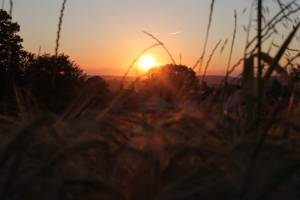
Corn Sunset by Cai Thomas
The Magic of the Earth
By Alex Sumner
Our mother the Earth pulses with the vitality of Spiritual Energy. The psychic imprint of every living being that has ever existed remains within the aura of this planet. But more than this – there exists the energetic signatures of spiritual beings that have ever remained unseen in the purely physical world. Yet more remarkably – the warp and weft of lines of force stretch across the surface of our world in a manner which no one can explain, save by positing the idea that our planet itself lives and breathes and thinks and feels – and remembers. The born-psychic, the clairvoyant who has spent many years developing his or her faculty, and even the complete beginner who can boast no other qualification except for an open mind: all of them – all of you – can detect and interact with these phenomena right now, even as you read these words.
A magical library of ancient wisdom lies scattered across the Earth, and its sacred places represent those points where we can gain access thereto. All parts of the Earth have a sacred character to a greater or lesser extent. However – for practical purposes – one can more easily detect this at sites traditionally associated with worship.
What does this library contain? If you search hard enough – the answer (or at least the method of working out the solution) to any question you might reasonably want to ask. I call it a ‘library’, though, because it takes some searching and not a little ingenuity to discover the correct answer and where it lies. Yet everyone who searches diligently will soon realise that the potential for exploration has no limits.
The Initiated Meaning of Ley Lines
I would like to share a series of practical methods for accessing this spiritual heritage of the Earth.
Ley Lines exist. Some have so much power that the ease of finding them can easily surprise – I speak from personal experience. Commentators on them have long observed that Ley Lines connect places of worship in the ancient world, including both megalithic monuments and sites where now stand modern churches.
But… the question arises: Why do they exist? What purpose do they serve? From one aspect this line of enquiry has little point to it: assuming they predate humanity one can say that ‘they exist’ and ‘they serve themselves.’ Looked at from the viewpoint of the beings that live on the planet – of which humankind comprises but a fraction and not necessarily the most important one at that – a clear tradition exists. Ley Lines serve the function of ‘Spirit Roads,’ i.e. routes used by spiritual entities to traverse the landscape.
A tradition exists, certainly in the British Isles, that the road leading from a church to the local graveyard lies on a perfectly straight path. The folk-belief that arose around this practice held that spirits travel in straight lines – whereas a curved or winding path confuses them. When one examines the layout of the old towns where such beliefs exist, one invariably notices that the church, the graveyard and the connecting corpse-road form part of a Ley Line.
I now believe that this arose from a dimly remembered recollection of how ancient magicians used Ley Lines. The folk-belief held that the “spirits” which used a spirit-road were those of the dead: I, however, say that in the secret tradition they comprised Spirits of the Living, i.e. magicians. (Incidentally I reached this conclusion after having consulted an astral entity of the kind I describe later on in this article.)The magician would memorise every point on the line – every cairn, anvil-pool, earth mound, standing stone, stone circle, etc – in the correct order. He (or indeed she) would visualise each location in turn, mentally traversing the length of the Ley line and coming back again.
Those who have studied astral projection will recognise this as a method for inducing an Out-of-the-Body-Experience (you can practice this for yourself to try this out). The act of successively visualising each point on the Ley Line naturally causes the Magician to enter an altered state of consciousness, loosening the ties to the physical body, and enabling him or her to astrally travel to the sites along that line, and interact whilst there – for example – by receiving psychic impressions at the place in question.
Shamen in South America relate that tribes in Amazonia used this or a similar method to communicate across the whole rain forest, without ever physically leaving their village.
‘Genii Loci’
But Ley Lines do not just exist as paths between one point and another, but as connections between magical and sacred sites.
In spiritual terms nothing – i.e. no physical thing – is truly ever ‘dead.’ Everything, whether mineral, vegetable, or animal, has at least some ‘spiritual life’ to it, though the extent to which each one does varies greatly in each particular case.
The experienced psychic can make contact with each instance of spiritual vitality and communicate with it – but that does not mean that he or she would necessarily find it useful to do so.
However – speaking from personal experience – certain locations upon the Earth have such a large aggregation of spiritual vitality that the energy there behaves as a sentient and intelligent being. These locations coincide with the sites of ancient worship – the very same places that Ley Lines connect together.
The living wisdom of such a site has the traditional term of ‘Genius Loci’ – meaning ‘the spirit of the place.’ If one communicated with a Genius Loci it would appear to ones clairvoyant vision as an actual being – perhaps a person, deity or spirit traditionally associated with such a place. The Genius Loci might exist as an actual being in its own right, or an artificial elemental created by the egregore of the people who worshipped at the site – or a combination of both.
Despite the great age of many sacred sites, one can still find their respective Genii Loci there, even after thousands of years. One can do this by physically visiting the place in question – or by doing so in the astral – hence the reason for them lying along Spirit Roads or Ley Lines.
This too you can attempt yourself. ‘Go’ to a sacred site which you know, and ask its Genius Loci to appear to you clairvoyantly. It can talk to you about such things as what went on at that particular site, the nature of local deity or the people who worshipped there, or about the nature of psychic questing generally. Remember to be respectful towards it, and always thank it when you have finished.
Stonehenge, for example, has one of the most helpful Genii Loci I have met. And no wonder, since it has lain at the centre of British spiritual awareness for over three thousand years, since before even the time of the Druids. From this I can extrapolate a tip for beginners to the practice of contacting Genii Loci: start with major sites as these will prove easier, and move on to more obscure ones as you gain in confidence.
Another practical method: how can one use these Earth mysteries to help solve everyday problems? E.g. health, money, love, etc? Do some research and find a sacred site associated with a health deity, or a money deity, or a love deity – or any deity in the habit of granting boons to devotees. Or maybe a place which, whilst not associated with a know deity, does however have the reputation of bestowing good luck upon its visitors. Go to that site either physically or astrally, and commune with the Genius Loci there, for if anyone can help you out, they will.
Advanced Work
However… where to find all these sites, these nexus-points of ancient energy? Available literature can tell you so much – and some of admittedly has more reliability than most – but ultimately finding them oneself satisfies to a far greater extent than book learning ever will. If I were to say to you: “There is a Ley Line in such-a-place, running in such-a-direction” – that will not do you much good. The subject of ley hunting will only come alive when you find one yourself. And this means going on a field trip.
In this connection I would like to relate my experiences of the first time I went dowsing. I had no specially constructed equipment, nothing consecrated or blessed by some wizard or bought from a magical supply shop. A pair of L-rods created from coat-hanger wire, and a mind open to the possibility that dowsing could indeed work formed the only equipment that I had in my possession that day. I also had a teacher, a quite down to Earth woman who possessed absolutely no shred of superstition whatsoever. She had the attitude of “Dowsing is real – don’t ask me how!” She spent half an hour explaining the basic techniques, put the L-rods in my hands, and set me off.
I explored an archaeological site, and noted that the rods crossed at certain points. This I did not think remarkable… until I noticed other people in the same party also had their rods crossing at the very same points.
Some time later I had the opportunity to visit Avebury, and surprised myself by detecting a line of energy passing through the centre of the village via Silbury Hill, a few miles away. But this surprised increased even more when I checked on a map and found that several hundred miles to the south, the same line passed straight through the giant megalithic site at Carnac in Brittany.
I do not claim any talent in dowsing. I found this Ley Line not because of any great ability which I have, but because the energy of the place lay there for me or absolutely anyone else to discover. This incidentally would make a good beginner’s tip: get used to the art by starting from a known power-centre and go from there. Stone-circles make the best such sites at which to practice ones dowsing skills. Arm yourself with a pendulum and a compass – or indeed the Compass app on your iPhone! – and stand in the centre of the circle. Get in the zone, establish your ‘yes’ and ‘no’ signals, then face each stone in turn, asking: “Is there a ley line in this direction?” When you get a ‘yes’, make a note of the bearing so you can check it later. Do not stop when you get at your first ‘yes’, but check the remainder of the stones to see if there are more than one Ley lines.
Earth energy exists. One can sense it not only psychically but – via the rod or pendulum – physically as well. The potential to explore it and its many mysteries has no end.
You can find more of Alex’s work at www.solascendans.com
Back to Top
Modern Grimoire Magick: Folk Magick and The Solomonic Path
By Aaron J. Leitch
The medieval systems of “grimoiric” mysticism (of which the European Solomonic tradition is a part) are outlined in such manuscripts as The Key of Solomon the King, the Goetia, the Book of Abramelin, The Magus, etc.[1] The authors of these texts (many of them members of the medieval Catholic Church) drew magickal secrets from the cultures they found around them – such as Jewish Merkavah Mysticism and Qabalah, classical Gnosticism, Arabic Sufism and the rich traditions of European pagan folklore.[2]
The mysticism that evolved among these Christian mages was fairly shamanic. It called upon the Angels and spirits of nature. It described methods of exorcism and acquisition of spirit familiars. Wax images, sacrifices, incantations and necromancy all proved a marked pagan influence on the texts. Yet, they were unquestionably the work of devout Christians, who invoked the name of Jesus, used standard Christian prayers (such as the Pater Noster and the Psalms) as magickal spells, and presented a blatantly Christian mythos.
The Solomonic mystics were unique because they were among the first humans in history to have access to the technology of paper and bound books.[3] (They were very often scholars, scientists or scribes.) Therefore, they naturally recorded much of their tradition into manuscripts called textbooks or “grammars” (French: grimoire). The appearance of these grimoires shocked Roman Catholic and many Protestant authorities so deeply, it triggered the Inquisitions and mass book burnings. What we know of Solomonic mysticism today comes largely from the grimoiric manuscripts that survived.
After the Inquisitions, the Age of Enlightenment dawned in Europe. The surviving grimoires had vanished into private collections and museum archives – mostly guarded by the Masons as occult curiosities. There was the odd scholar or quasi-Masonic group (most of them students of Hermeticism) who discovered the texts and made use of some of the material. You might recognize many of the names – Elias Ashmole, “Dr. Rudd”, Francis Barrett, MacGregor Mathers and Aleister Crowley are just a few. However, few of them practiced the texts on their own terms. The more pagan elements of the grimoires vanished, and the mark of Masonic lodge-style magick was eventually imprinted upon them.
Today, there are many ceremonial groups that make limited use of the Solomonic material – most of them descended from or influenced by a late Victorian quasi-Masonic lodge called the Hermetic Order of the Golden Dawn. There have even been a number of modern Orders that focus entirely on the grimoires,[4] though even they are influenced by post-Golden Dawn magickal methodology. Toward the end of the 20th Century, several books were released that present methods for summoning Angels and spirits based upon (or influenced by) Golden Dawn techniques.[5]
While the modern ceremonial systems may draw names, sigils and talismans from the medieval grimoires, the techniques they utilize are no older than the late 1800s – and in some cases are even younger. The grimoires are not composed of lodge-style ceremonial magick. You’ll find no “Lesser Banishing Ritual of the Pentagram” in the Key of Solomon the King. You will not see instructions in the Goetia to inscribe geometric figures in the air. No Tarot-based Elemental Weapons or Lotus Wands are found anywhere in the vast corpus of medieval Solomonic literature.
At the time I wrote my book on grimoire magick, I was operating under the impression that the “living grimoiric tradition” – as recorded by the medieval mages themselves- had long-since ceased to exist. I focused strictly upon the historical European Solomonic tradition, along with suggestions for following a similar path in the modern world. (In fact, I was hoping my book would help to re-ignite the Solomonic tradition, and provide a textbook – grimoire – for it.)
However, over the past several years, I have discovered that I was fundamentally wrong about the passing of the “living grimoiric tradition.” It was not stamped out by the Church, nor has it been dead and buried in Masonic vaults for the past 400 years! Indeed, it survived the inquisitions, migrated to the New World with European immigrants, and – true to its shamanic nature – mutated to a new form. It has been with us right here in America for nearly as long as the nation has existed – and it is currently becoming part of a larger occult revival. I have been shocked to discover just how many people are currently out there really working with this material! Their procedures may or may not differ from what I describe in my book. I may or may not always agree with their philosophies about the magick. Yet, one way or the other, they are using the old methods and getting results.
Thus, contrary to what you may read in my previous work, the Solomonic tradition is alive and growing today. In this essay, I will trace this slightly mutated “grimoiric” trend from Europe to the New World (both New England and the American South), and finally discuss how it is currently affecting aspirants searching for the Solomonic path. Overall, I hope to give the reader a solid impression of what it means when someone – right here in the modern world – calls him or herself a “Solomonic magician.”
European Folk Magick in the New World
The medieval Solomonic grimoires are, in fact, a sub-set of a larger literary genre – the folkloric “receipt-book.” (The word “receipt”, used in this sense, is an archaic form of the word “recipe.”) A receipt-book was a hand-written journal of family and local folklore, passed down from generation to generation.
The typical receipt-book contained such things as agricultural lore, cleaning tips, beauty aids and “home remedy” medicinal secrets. For an example of such domestically-useful content, take this recipe for a plaster that aids healing:
A Very Good Plaster.[6]
I doubt, very much whether any physician in the United States can make a plaster equal to this. It heals the white swelling, and has cured the sore leg of a woman who for eighteen years had used the prescriptions of doctors in vain.
Take two quarts of cider, one pound of bees-wax, one pound of sheep-tallow, and one pound of tobacco; boil the tobacco in the cider till the strength is out, and then s train it, and add the other articles to the liquid: stir it over a gentle fire till all is dissolved.
Or this recipe for curing fatigue:
Another Remedy for Weakness[7]
Take Dittany and St. John’s wort, and put them in good old rye whiskey. To drink some of this in the morning before having taken anything else, is very wholesome and good. A tea made of the acorns of the white oak is very good for weakness of the limbs.
The receipt-books also contained occult lore – in the form of incantations, spells and simple conjurations. Depending on the source, this occultism is variously known as European folk magick, witchcraft or “collections of local superstitions.” For example, here is a folk remedy for the fever:
How to Banish the Fever.[8]
Write the following words upon a paper and wrap it up in knot-grass, (breiten megrich,) and then tie it upon the body of the person who has the fever:
Potmat sineat,
Potmat sineat,
Potmat sineat.
Or, how about this helpful hint for ranchers:
Another Way to Make Cattle Return Home.[9]
Feed your cattle out of a pot or kettle used in preparing your dinner, and they will always return to your stable.
There are also more involved spells, which should sound very familiar to any student of the Solomonic tradition:
To Prevent Bad People From Getting About the Cattle.[10]
Take wormwood, gith, five-finger weed, and assafœtida; three cents’ worth of each; the straw of horse beans, some dirt swept together behind the door of the stable and a little salt. Tie these all up together with a tape, and put the bundle in a hole about the threshold over which your cattle pass in and out, and cover it well with lignum-vitæ wood. This will certainly be of use.
This kind of magick was a hold-over from the paganism that existed in Europe before the domination of the Church. While the pagan religions themselves may have been destroyed, local and family traditions and folklore often survived. Many of them simply adapted to the new Christian environment. By the time the receipt-books were penned, Biblical scripture and prayers to Jesus and Saints had become intermixed with the older pagan material:
Another Well-Tried Charm Against Firearms.[11]
Blessed is the hour in which Jesus Christ was born; blessed is the hour in which Jesus Christ was born; blessed is the hour in which Jesus Christ was born; blessed is the hour in which Jesus Christ has arisen from the dead; blessed are these three hours over thy gun, that no shot or ball shall fly toward me, and neither my skin, nor my hair, nor my blood, nor my flesh be injured by them, and that no kind of weapon or metal shall do me any harm, so surely as the Mother of God shall not bring forth another son. + + + Amen.
At the same time, aspects of Judeo-Christian occultism (such as we see in the Solomonic grimoires) were incorporated into the receipt-books. Perhaps the best example of this is the famous SATOR/ROTAS magickal square:
S A T O R
A R E P O
T E N E T
O P E R A
R O T A S
We have seen this square on Solomonic talismans, and a (slightly altered) version even appears in the Book of Abramelin.[12] Meanwhile, the lesser-known receipt-books grant this talisman various powers. If written on either side of a plate and cast into a fire, it can extinguish the flames without water. If written on paper, ground up and added to cattle’s feed, it will protect the beasts from evil witchcraft. If built into the structure of a door or window, it will keep evil spirits from entering.[13]
Another folk remedy for the fever should be familiar to students of European occultism:
To Banish Convulsive Fevers.[14]
Write the following letters on a piece of white paper, Pew it on a piece of linen or muslin, and hang it around the neck until the fever leaves you:
A b a x a C a t a b a x
A b a x a C a t a b a x
A b a x a C a t a b a
A b a x a C a t a b
A b a x a C a t a
A b a x a C a t
A b a x a C a
A b a x a C
A b a x a
A b a x
A b a
A b
This talisman is obviously adapted from the “Abracadabra” formula, which adopts its principal from Qabalistic philosophies on the power of words. The fever is symbolically linked to the word “Abracadabra” (or, in this case, “Abaxacatabax”), and should diminish as the letters of the word are reduced one by one. (Most folks are familiar with “Abracadabra” because stage-magicians in the early 1900s – who sometimes claimed real occult power – adopted the word into their acts.)
The receipt-books were grimoires in every sense of the word- and were sometimes known as “wonder-books.” In fact, it could be said that the Solomonic grimoires were merely the receipt-books (or wonder-books) of one group of medieval Christian mystics.
Once the Inquisitioners had finished searching for grimoires on the shelves of their clergy, they began seeking out the local healers and midwives who often had receipt-books of their own. (From this grew the legends of “witch-burning” that characterize the Inquisition to this day.)
It was this atmosphere of religious persecution throughout Europe that prompted many individuals and entire communities to seek their fortunes in the New World. Those whose faiths were labeled (or bordered upon) “heresy” migrated especially to the colony of Pennsylvania, which had been founded (in 1681 CE by the Quaker William Penn) on the principal of religious freedom. It quickly became a haven for Quakers, Mennonites, Anabaptists and other obscure (and often mystical) religious sects. By 1683, German settlers had established the community of Germantown near Philadelphia – and they brought their receipt-books with them.[15]
Once in the New World, the lore we find recorded in the books combined with Native American herbalism. (The immigrant cunning-folk and healers would have wanted to learn about the local plant life as soon as possible, in order to make necessary medicines and potions.) The information then began to appear in published works in the late 1700s and 1800s. Thanks to mass distribution through mail-order catalogues,[16] books like the Farmers Almanac, and John Hohman’s Pow-Wows, or the Long Lost Friend (first published in German, in 1820, as Der Lange Verborgene Freund) became the foundation of the New England folk tradition.
This New England folk tradition is sometimes called Hexcraft – though this may be a modern convention. Alternately, it has been called braucha in the Pennsylvania Dutch dialect, speilwerk in the German, or “Pow-wow” after the title of John Hohman’s book. (He had simply borrowed an Algonquian word for “shaman.”)[17]
Practitioners of Pow-wow magick were known by the German term Hexenmeisters (spell-masters). Besides their spells and conjurations, they were most famous as herbologists and healers. In most cases, the tradition could only be handed down from a male to a female, or from a female to a male – especially from mother to son. (Modern students of Wiccan history may find that information of interest.)
Receipt-books had been kept within families since the invention of paper and bound books, and they continued to appear even as late as 1950s America. Eventually, the advent of the Industrial Age and the nuclear family destroyed the transmission of such folk wisdom from the older generations to the younger, and the receipt-book finally disappeared.[18] Today, it is unclear how many hexenmeisters are left, or whether or not the tradition will be handed down to another generation.
Nonetheless, Mr. Hohman’s book eventually became the quintessential American grimoire, and was the principal (but not the only) source of spells for Pow-wowing. (In fact, all of the above examples of receipt-book folklore were taken from The Long Lost Friend.) Another text of importance was Egyptian Secrets, (supposedly) by Albertus Magnus, which was one of the main sources for Hohman’s book.
Even more interesting for us here, there were several classical grimoires that made it through the Inquisition and across the sea to America. The most important to the Pow-wow tradition were the Sixth and Seventh Books of Moses, the Black Pullet and possibly the Goetia as well. The hexenmeisters were not very interested in the purification rites and conjuration ceremonies. Instead, they merely adopted the elaborate seals and sigils – which they charged according to their own tradition. For instance, merely placing a grimoiric seal inside a Bible for seven days was often enough to make it magically viable.
Unfortunately, these classical grimoires were often associated with “black-magick” by Pow-wow healers. Even owning such a book was seen as an indication of satanic influence- and they were strictly avoided by those who wished to present Pow-wow magickal lore as lawful within Christian dogma.[19]
The Magick Moves South: The Hoodoo Tradition
While the European immigrants were bringing their religions and folk magick with them to New England, the slaves were bringing theirs to the South. In places like Cuba, the Caribbean and the American southern states (like Louisiana), we find a strong presence of the African Diaspora religions – such as Santeria, Palo and Voodoo (or Voudoun).
These initiatory shamanic faiths were themselves combinations of the original African religions and elements from religions in the New World. Santeria adopted much from Catholicism, so that Saints were invoked as indistinguishable from the African Orishas (gods). Both Santeria and Palo drew from Allan Kardec’s Spiritism (an offshoot of Spiritualism) to replace their lost ancestral worship- resulting in the mesa blanca (white table) séances.
It would also appear that, unlike the New England hexenmeisters, the Diaspora faiths had no compunction against making use of the European grimoires. [20] For example, at some point, several of the seals from the Goetia and related texts were adopted by the Voodoo priests as veves (sigils) for the African Loas (gods).[21]
For example, compare the following two sigils. One is from the Goetia, representing the spirit Gomori. The other is the Voodoo sigil for the Loa Ezili-Freda:

The next example is also from the Goetia – the seal of the spirit Marbas. Compare this to the sigil of the Loa Ibo:

the Grimoirum Verum, representing the spirit Frucissiere. Corresponding to this, we have the Voodo sigil of the Loa Papa-Legba:

As one should expect, these African-descended religions also brought with them a rich tradition of African folk magick. Crossroads magick, “foot track” magick, “laying down tricks”, crossing and uncrossing, gris-gris or mojo bags, ritual sweeping and bathing are all African survivals. And, as usual with folk traditions, these things were not strictly contained within the Diaspora religions. Instead, during the late 19th century, they disseminated among the lay-people as well – intermixing freely with the folklore and occultism of surrounding cultures. Included in the mix were Native American herbalism, Spiritism, European folk magick (especially Pow-wow), and the medieval grimoires.
This new southern American folk tradition was eventually labeled Hoodoo – also known as root-working and conjure sorcery.[22] Because of its close ties to Voodoo, Palo, etc, it is often mistaken as a Diaspora religion in its own right. However, Hoodoo is not a religion, nor does one have to be an initiate of any of these religions to practice. Like the Pow-wow tradition, it was taught and practiced by common folk within families or close-knit communities. (Pre-WWII blues music is known for references to Hoodoo – such as Crossroads Blues by Robert Johnson and Hoodoo Lady by Memphis Minnie.)
Of course, for this essay, we are most interested in the influence of European folklore and occultism on Hoodoo. The southern rootworkers (or root-doctors) were great fans of what they considered “Jewish Kabbalistic” works like Hohman’s The Long Lost Friend,[23] Magnus’ Egyptian Secrets and grimoires like The Sixth and Seventh Books of Moses, The Black Pullet, The Key of Solomon the King and The Goetia. In fact, there is some speculation that the term “Hoodoo” may descend from the Latino word Judio, pronounced “hoo-dee-oh”, and meaning “Jewish.” It could easily have come into the culture via Palo, within which is a path named Palo Judio. If this is the origin of the word Hoodoo, then it is likely the practice was named for its association with so-called “Jewish magick”; the medieval grimoires.
However, much as we see with New England folk magick, the southern rootworkers were not interested in the grimoires’ ritual instructions – they wanted books with lots of seals and words of power associated with them.[24] These seals were then drawn on paper and placed in sachets, buried in pathways, built into doors, placed upon wounds, etc. – similar to the manner in which the SATOR square is used. They could be empowered via several simple methods such as intonation of their words of power, anointing with oil, recitations of scripture and/or enclosure within a Bible for seven days.
Another European magickal tradition adopted into Hoodoo was the use of the Biblical Psalms as spells or conjurations in their own right.[25] This was largely (but not entirely) thanks to the publication of a text called Secrets of the Psalms: A Fragment of the Practical Kabala by Godfrey Selig.[26] (Possibly based upon a medieval Jewish book entitled Shimmush Tehillim – On the Use of Psalms.) Selig’s book described the Qabalistic philosophy that the Psalms (especially those attributed to King David) contain hidden “seed syllables” that will produce magickal affects if pronounced aloud.
In practice, however, the use of Psalms in Hoodoo magick is much like the conjurations of the Solomonic tradition. The magickal effect produced by the scripture is directly related to the subject-matter of the passage- rather than to Hebrew “seed-syllables.”[27]
For instance, if one wants to bring fortune to his home, one might recite Psalm 61 which says:
Thou hast been a shelter for me, and a strong tower from the enemy. I will abide in Thy tabernacle forever, I will trust in the covert of Thy wings.
If one has need to travel by night, one might invoke protection via Psalm 121 which says:
I will look up mine eyes unto the hills, from whence cometh my help.
For headaches or backaches, one can recite Psalm 3 (traditionally used in exorcism) which contains the line:
Thou, o Lord, art a shield for me; my glory, and the lifter of my head.
In this manner, Secrets of the Psalms outlines Psalms for numerous uses- such as release from prison, business success, safe childbirth, success in court, defeat of enemies, general protection from evil and more. Psalm magick remains central to Hoodoo practice to this very day.
Hoodoo reached its greatest popularity during the early 1900s – largely thanks to the growing mail-order industry and companies like King Novelty Co., Valmore Beauty Products, the Lucky Heart Co., and R.C. Strong. These companies specialized in beauty products (like Sweet Georgia Brown Hair Pomade, Bleach Cream and Face Powder), cleaning supplies, and “spiritual curios.” The spiritual curios are what interest us- the basic components of conjure-spells like roots and herbs, incenses, anointing oils, lodestones and herbal washes.
Within these same catalogues, rootworkers could find such grimoires as The Long Lost Friend, The Black Pullet, The Sixth and Seventh Books of Moses, and the Secrets of the Psalms, right alongside of books like The Art of Kissing, the Book of 1000 Ways to Get Rich and The Egyptian Witch Dream Book and Fortune Teller.
Eventually, an expanding market lead to several new books that blended the European occultism of the grimoires with the growing lore of Hoodoo. Lewis de Claremont[28] released a number of books, among them The Ten Lost Books of the Prophets, The Seven Keys to Power, and The Ancients Book of Magic. Also of particular interest to us is Henry Gamache’s The 8th, 9th and 10th Books of Moses, which is similar to the older grimoire, but includes a lengthy introduction by the author that links African tribal beliefs with (so-called) anceint Jewish and Egyptian practices.
Henry Gamache also wrote an important Hoodoo book called The Master Book of Candle Burning. The folk use of candle burning likely originated in the Catholic practice of lighting votives to the Saints and the dead. Then, thanks to mass-production in the early 1900s, candles of all sorts of shapes and colors became easy to obtain from local drugstores. This led to the central role that candle-burning magick played in Hoodoo.[29]
The practice was fairly simple. One merely needs to take a candle of an appropriate color (such as green for money, red for love, black for curses, etc), anoint it with a related dressing oil (Money Drawing Oil, Healing Oil, Follow Me Girl Oil, Aunt Sally’s Lucky Dream Oil, etc), and light it with an appropriate Psalm or statement of intent.[30]
Today, Hoodoo candles are available in a plethora of types and shapes. The most popular are glass-encased seven-day candles with pictures of Saints on their labels. (They usually have a prayer to the Saint on the back of the lable as well.) Some of them are multi-colored for spells designed to have different effects at different stages. You can even buy candles with one color on the outside and another on the inside- for removing jinxes and returning them to their senders. You can even buy candles shaped like men, women, penises, and other shapes that aid in magickal sympathy with the object of the spell.
It is very unlikely that Hoodoo is in the same danger of dying out as Pow-wow. (This is likely due to the fact that Pow-wow put heavier restrictions upon its transmission.) As Hoodoo once disseminated itself through mail-order catalogues, it is now gaining popularity through the Internet. Websites like the Lucky Mojo Curio Co.[31] make the obscure spell ingredients, altar tools, talismans, and books easy to find.
Rootworking and conjure-magick is alive and well. One reviewer of Secrets of the Magickal Grimoires suggested the release of my book was well timed, because it met with an “…increased interest in operative magic…”[32] I suppose what they meant by that was a rising interest in good old-fashioned witchcraft. The kind of folk-magick that requires a crossroads at midnight and railroad spikes, rather than initiations and lodge-style ceremonies. The kind of magick our ancestors used and passed on to their children, but was sacrificed to “scientific reason” and the nuclear family before our generation came along. As the world becomes an increasingly hostile and dangerous place, perhaps the younger generations desire to reconnect to the healing spells, protective spirits and results-oriented “operative magick” we have lost.
The Modern Solomonic Path
In this essay, we have traced grimoiric shamanism from medieval times to the present day, and we have seen that it followed two specific paths: One path was with the Masons and Hermeticists. They eventually borrowed the grimoires’ talismans and words of power, but applied them to their own lodge-style magick. The second path was with the immigrants who took the grimoires with them to the New World, packaged with their native folklore. However, they also ignored the ritual instructions in favor of the talismans and words.
The modern Solomonic Path differs from these in that it does not eschew the instructions recorded in the grimoires. The purifications and preparations, robes and magickal tools, conjurations and ceremonies are what define the Solomonic Path. However, at the same time, the Solomonic mage is just as interested in the “rootworking” aspects of the grimoires that have been dismissed by the magickal lodges. The wax images, virgin-spun thread, sacred herbs, etc.
The Solomonic mages in medieval Europe had borrowed what they could from local pagan folklore. Likewise, modern Solomonic mages are drawing pagan material from systems like European folk-magick, the African Diaspora religions and Hoodoo. (In fact, the practice of borrowing material from European and African folklore is a hallmark of Hoodoo itself.)
When I began to explore the Solomonic material (during the 1990s), I was unfamiliar with the traditions of Pow-wow and Hoodoo. I knew that Pow-wow existed, but I knew very little about it and had no idea it was connected to the medieval grimoires. Of Hoodoo I knew even less – except for a vague understanding that some members of the Afro-Caribbean communities were using the Books of Moses and possibly a few other medieval European texts. In fact, I had heard there was a growing “Solomonic trend” within these communities, though I had no clue where this movement was taking place.
For some years, I had used the grimoires in the modern ceremonial fashion; with acceptable results. I knew it was not a true reflection of the magick presented in the medieval texts – however, the grimoires were not easy to understand on their own terms. Besides being jumbled and obscurely worded, they were missing a lot of material that had likely been transmitted orally from teacher to student. Plus, their instructions often directly contradicted what I “knew” to be true about magick.
Eventually, I stumbled upon Santeria and Palo Mayombe through a friend who had been initiated into both faiths. At first, my interest in his knowledge was purely academic. I love to speak with people of differing faiths and worldviews, and especially of different magickal systems, in order to widen my own perspective. In this case, I was wildly successful – because my discussions with the Santero radically altered my worldview. Those long conversations were my first real introduction to magickal principals outside the influence of Neopaganism or the Golden Dawn. It was my first direct encounter with established systems of shamanism.
It all came together when the Santero and I realized that his descriptions of African-descended magick were coming awfully close to my descriptions of the Book of Abramelin, the Key of Solomon and several other grimoires. Agrippa’s Occult Philosophy did not contradict his own at all. (He was particularly fascinated by Book I of the Three Books…- dealing with “natural magick,” or what we have been calling folk-magick.) Many aspects of the grimoires that made no sense to me, and were often called “blinds” by others, were perfectly logical when viewed through his shamanic worldview. (Frog skin? Blood from a black cat? Ritual sacrifice??)
Before long, I was bringing the grimoires to him for clarification. I would ask him about the obscured and missing aspects of Solomonic magick, and he would fill in the gaps by describing similar practices in Santeria or Palo. He could tell me why certain things were done, and even where to find the obscure ingredients. (The co-relations were so close, I began to suspect the African and Solomonic traditions had crossed paths before.) Eventually, my girlfriend decided to explore the path of Palo with my friend as her spiritual god brother, and the two of them have been invaluable sources of information and practical experience ever since.[33]
In some cases, the grimoires and folk traditions like Hoodoo match almost exactly. A great example is the parallel folklore about crossroads found within both. Hoodoo teaches that a crossroads at midnight is a place of convergence – between days, human destinies and “between the worlds” of human and spirit. At the crossroads, spirits are met, deals are made and power is gained.[34]
Meanwhile, grimoires like the Key of Solomon the King insist that evocations (especially necromancy or goetic work) are best performed at a crossroads “during the depth and silence of the night.” [35]In The Magus, we find an operation for binding a number of familiar spirits to a magickal book – including both a crossroads and the hour of midnight.[36] One is to prepare the book with all the prayers and conjurations necessary to call the spirits. Then, at a crossroads at midnight, one must prepare a magickal circle. The book is consecrated and the spirits are summoned. The book must then be buried in the center of the crossroads and (after wiping away all traces of the circle) left for three days. On the third night, one must return again at midnight, reform the circle, offer prayers of thanks and retrieve the book. That is the kind of magick any good rootworker can appreciate!
We can find even more examples of folk magick in Agrippa’s Occult Philosophy, Book I, “Natural Magic.”[37] In fact, I would suggest that it stands on its own as a root-worker’s manual- especially for someone geared toward the Solomonic path. It is certainly the most neglected book of Agrippa’s trilogy, merely wanting rediscovery by modern aspirants.
A wonderful example is found in Chapter 16, “How the operations of several Virtues pass from one thing into another, and are communicated one to the other“:
Therefore they say that if any one shall put on the inward garment of an Harlot, or shall have about him that looking glass, which she daily looks into, he shall thereby become bold, confident, impudent, and wanton. In like manner they say, that a cloth that was about a dead Corpse hath received from thence the property of sadness, and melancholy; and that the halter wherewith a man was hanged hath certain wonderfull properties.
[…] If any shall put a green Lizard made blind, together with Iron, or Gold Rings into a glass-vessel, putting under them some earth, and then shutting the vessel, and when it appears that the Lizard hath received his sight, shall put him out of the glass, that those Rings shall help sore eyes. The same may be done with Rings, and a weasel, whose eyes after they are with any kind of prick put out, it is certain are restored to sight again. Upon the same account Rings are put for a certain time in the nest of Sparrows, or Swallows, which afterwards are used to procure love, and favor.
This sounds like something one would expect to read in a Hexenmeister‘s receipt-book. It is an example of sympathetic magick- or “like attracts like”- the hallmark of most primitive shamanic and folk traditions.
Agrippa makes much of magickal sympathy in his book on Natural Magick. Another example can be found in Chapter 19, “How the Virtues of things are to be tried and found out…”
Moreover thou must consider that the Vertues of things are in some things according to the species, as boldness, and courage in a Lyon, & Cock: fearfulness in a Hare, or Lamb, ravenousness in a Wolf, treachery, and deceitfulness in a Fox… So is boldness in a Harlot, fearfulness in a Thief. And upon this account it is that Philosophers say, that any particular thing that never was sick, is good against any manner of sickness: therefore they say that a bone of a dead man, who never had a fever, being laid upon the patient, frees him of his quartane.
Extending from this philosophy of sympathy, we find healing practices in faiths like Santeria wherein an animal (usually a bird) is applied to the body to “absorb” a sickness. This is described by Agrippa in Chapter 21, “Of the Virtues of things which are in them only in their lifetime…”:
So they say that in the Colick, if a live Duck be applyed to the belly, it takes away the pain, and her self dies.
Agrippa gives many further examples in Chapter 51, “Of Certain Observations, Producing Wonderfull Virtues“:
So they say that quartanes may be driven away if the parings of the nails of the sick be bound to the neck of a live Eel in a linen cloth, and she be let go into the water. And Pliny saith, that the paring of a sick mans nailes of his feet, and hands being mixed with wax, cure the quartan, tertian, and quotidian Ague, and if they be before Sun rising fastened to another mans gate, will cure such like diseases. In like manner let all the parings of the nailes be put into [anthills], and they say that that which begun to draw the nailes first must be taken, and bound to the neck, and by this means will the disease be removed. They say that by Wood stricken with lightning, and cast behind the back with ones hands, any disease may be cured…
Also the Spleen of Cattle extended upon pained Spleens, cures them, if he that applies it, saith that he is applying a medicine to the Spleen to cure, and ease it: After this, they say, the patient must be shut into a sleeping room, the door being sealed up with a Ring, and some verse be repeated over nineteen times.
I find the following quote – from the same chapter – to be particularly fascinating from the root-working perspective:
It is said also in gathering roots and herbs, we must draw three circles round about them, first with a sword, then dig them up, taking heed in the mean time of a contrary wind.
Space prohibits me from giving more excerpts – though I certainly could continue at some length. Agrippa continues to describe auguries by animals, the power of “enchantments” (incantations), and many more tidbits of use to modern sorcerers. The entire book discusses the philosophies behind Natural Magick in depth – all based upon the four Elements and the seven Planets.
As we can see, there is plenty of material within Solomonic literature to appeal to members of Afro-Carribean religions and Hoodoo rootworkers. For this reason, it would seem, the modern Solomonic movement has become wedded to a parallel “ATR” (African Tribal Religion) movement.
There is currently a growing interest in the ATRs, as cultural intermixing in America has slowly opened them to Caucasians.[38] Many are taking the full initiations, while some are choosing the Hoodoo route of merely drawing folklore and folk-magick from the religions. The modern Solomonic sorcerer usually falls into the latter category, though I know of some Diaspora full-initiates who also engage in Solomonic practice.
Therefore, when we encounter the records of a modern grimoiric practitioner, we are likely to find a kind of hybrid between Solomonic magick and African rootworking. Let us take a look at some examples:

The Goetia tells us that King Solomon bound spirits into a brass vessel. The book also tells us how to make a brass vessel of our own, including the Hebrew Divine Names and the Seal of Solomon. However, it tells us nothing at all about what to do with the thing. One can assume the vessel should be placed in the Triangle of conjuration (with the spirit’s sigil traced on the ground beneath it), and perhaps a metallic seal of the spirit placed inside. Beyond that, where it comes to working with such a spirit in a vessel, the grimoire is silent.
Meanwhile, if we look to Palo we also find familiar spirits bound to vessels, called ngangas, and a practice backed by an elaborate and ancient tradition. They know the secret ingredients to include inside the vessel to provide a living environment for the spirit. They know how to feed and care for it. And they know how to get it to work for them.

The modern Solomonic mage can draw from such lore to “flesh out” the instructions of the Goetia. The brass vessel could include its own set of ingredients to provide the Goetic spirit with a harmonious environment. A Goetic “King” (a Solar spirit) like Belial would be in sympathy with the metals gold (from which his Seal should be made) and pyrite, solary plants (like saffron, sunflower, laurel and frankincense) and solar stones (such as ruby, yellow topaz and carbuncle). Small figurines of a sun, a hawk, a king, a scepter, and/or a throne (and better if they are fashioned from gold) can be included.
Also dirt from places like local hospitals, courthouses, police stations, etc. will grant the spirit a direct astral link with the places from which the dirt was taken. This gives the shaman some amount of protection from and influence over the organizations at those locations.
Adding fresh hot peppers to the vessel is an obscure secret. Paleros include them to add “spiritual heat” to their Ngangas; to excite the spirit and discourage it from lapsing into sleep.
Further ingredients could be included, such as tools for the spirit to work with. A writer would make sure to include a pen and paper. An artist could add a paintbrush and easel. A police officer could include a badge and bullet, or even a gun. Much like the dirt, the tools you give the spirit will give it influence over the arts that utilize those tools.
Santeria makes use of a special water it calls Omiero as a kind of offering to newborn Orishas. Simply put, it is water that has been strained through sacred herbs while a Santero sings shamanic songs over it. The Santero then uses this sacred water to wash the Orisha’s sacred objects before sealing them in an urn. The practice appeared in Hoodoo in the form of various herbal washes- usually sold in the catalogues as floor washes and baths. They can even be purchased today.[39] Or one could make their own by straining Solomonic holy water through herbs sympathetic to the spirit (i.e.solary herbs for Belial, etc). For the right Psalms to chant, one could reference Secrets of the Psalms[40] and/or read up on Psalmody in Secrets of the Magickal Grimoires.[41] Then, the resulting water could be used to wash the objects placed into the vessel, and even poured directly into the vessel itself during the Conjuration.
After the Goetia’s conjuration rites are complete, the brass vessel could be placed on a simple altar or shelf decorated in sympathy with the spirit; objects, colors, stones, plants, etc. Light a candle and incense when consulting the spirit, and don’t forget to feed it![42]
I’m afraid I must now bring this discussion to a close. If you are a Solomonic mage, I hope these practical examples have fired your imagination. If you are a student or aspirant seeking to discover the “Solomonic Path”, I hope I have given you some idea of the spirit behind the tradition and its history. (Make sure to explore the links in the footnotes!)
Bibliography
AGRIPPA, H.C., April 11, 2004-last update, Heinrich Cornelius Agrippa: Of Occult Philosophy, Book I. (part 1) [Homepage of Twilit Grotto: Archives of Western Esoterica], [Online]. Available: http://www.esotericarchives.com/agrippa/agrippa1.htm.
FRATER ALASTOR, February 21, 2004-last update, sigils and veve [Homepage of The Magick Circle], [Online]. Available http://www.frateralastor.com/veve.htm.
BARRET, F, unknown-last update, the magus [Homepage of Internet Sacred Text Archive], [Online]. Available: http://www.sacred-texts.com/grim/magus/index.htm.
GRASSO, S, unknown-last update, hoodoo [Homepage of philhine.org.uk], [Online]. Available: http://philhine.org.uk/writings/ess_hoodoo.html.
KONSTANTINOS, 2003. Summoning Spirits. 2nd edn. St. Paul, MN: Llewellyn Publications.
KRAIG, D.M., 2002. Modern Magick: Eleven Lessons in the High Magickal Arts. 2nd edn. St. Paul, MN: Llewellyn Publications.
KRIEBEL, D., July 21, 2003-last update, powwowing: a persistent american esoteric tradition [Homepage of Esoterica], [Online]. Available: http://www.esoteric.msu.edu/VolumeIV/Powwow.htm.
LEITCH, A., 2005. Secrets of the Magickal Grimoires. Woodbury, MN: Llewellyn Publications.
MATHERS, S.L.M., PETERSON, J.H., December 3, 2005-last update, the key of Solomon (clavicula salomonis) [Homepage of Twilit Grotto: Archives of Western Esoterica], [Online]. Available http://www.esotericarchives.com/solomon/ksol.htm.
MATHERS, S.L.M., 1975. The Book of the Sacred Magic of Abramelin the Mage. 2nd edn. NY: Dover Publications, Inc.
REGARDIE, I., 1985. The Golden Dawn: A Complete Course in Practical Ceremonial Magic, Four Volumes in One. 6th edn. St. Paul, MN: Llewellyn Publications.
RUNYON, C., 1996. The Book of Solomon’s Magick. Silverado, CA: Church of the Hermetic Science, Inc.
SELIG, G., 1958. Secrets of the Psalms. NY: Dorene Publishing Co., Inc.
STAVISH, M., unknown-last update, voxhermes review of ‘secrets of the magickal grimoires’ by aaron leitch [Homepage of Aaron J. Leitch], [Online]. Available: http://kheph777.tripod.com/secretsrev2.html.
STRASSER, B.D., 1999. Pennsylvania German Mysticism & Folk Spirituality. Allentown, PA: Allentown Art Museum.
YRONWODE, C., December 28, 2005-last update, hoodoo in theory and practice: an introduction to african-american rootwork [Homepage of Lucky Mojo], [Online]. Available: http://www.luckymojo.com/hoodoo.html.
Notes
1. See http://kheph777.tripod.com/secrets_chap1.html for an introduction to the medieval grimoires.
2. In fact, one of the grimoires- the Book of Abramelin- chronicles the journeys of one Aspirant who investigates all of these sources in his quest for the True and Sacred Magick. See Mathers (1975).
During the medieval period, both Gnosticism and Hermeticism were nearly dormant, and Rosicrucianism had yet to be introduced. These three, along with the Christian Qabalah, would arise later during the renaissance era and become the foundations of Christian Mysticism.
3. Paper was invented in China in the first century CE. However, they guarded the secret of its manufacture for quite some time, and the technology did not reach Europe until the 13th Century. This is the late medieval period. See http://en.wikipedia.org/wiki/Paper#History
4. See http://www.templeofastarte.com/ for the Order of the Temple of Astarte.
5. Regardie 1985, p.402; Kraig 2002, pp.371-420; Runyon 1996; Konstantinos 2003.
6. Excerpts from John Hohman’s Pow-Wows, or the Long Lost Friend. See http://www.locksley.com/llf/
7. Ibid.
8. Ibid.
9. Ibid.
10. Ibid.
11. Ibid.
12. In the Key of Solomon the King, see the Second Pentacle of Saturn (where the square is written with Hebrew letters).
In the Book of Abramelin, see Book III, Chapter Nineteen (For Every Description of Affection and Love), the ninth Talisman (By a Maiden in General). The square is there written:
S A L O M
A R E P O
L E M E L
O P E R A
M O L A S
The earliest known appearance of the SATOR / ROTAS magickal square was in first-century Pompeii, where it was written on a the wall of a residence, as “graffiti.” (It was more likely someone casting a Roman folk-magick spell.)
13. For further discussion of the folk use of the SATOR square, see Strasser (1999)
14. Hohman, op. cit.
15. Ibid. for further discussion of the migration of German mysticism to America.
16. Yronwode (1996, Online), “Admixtures: European, Spiritist and Kabbalist Influences on Hoodoo.”
17. See http://en.wikipedia.org/wiki/Pow-wow_%28folk_magic%29 for a short introduction to the subject of American “Pow-wow” magick; also Kriebel (2002, Online) for a lengthy discussion of the Pow Wow tradition.
18. However, the receipt books would become source-books for later spiritual traditions. No doubt, Gerald Gardner and the founders of British Traditional Wicca had access to such books (the “family traditions” to which many of them laid claim?) and drew much witchcraft lore from them.
19. Kriebel, op. cit.
20. In Leitch (2005), I made a small case for the idea that the African religions had affected the European grimoires during the time of their writing. If this is the case, then the favor was returned in the New World once the African Diaspora religions began to adopt material from the grimoires.
21. Alastor 2003, Online.
22. Yronwode 1996, Online; Grasso 2004, Online.
23. Yronwode 1996, Online, Powwows – http://www.luckymojo.com/powwows.html
24. Even today, you can purchase the Seals from the Books of Moses in Botanicas or even from online curio suppliers. See http://www.indioproducts.com/webstore/index.php?cPath=580 for an example.
25. We can see this throughout the Key of Solomon the King, as well as other medieval grimoires both Christian and Jewish.
26. Yronwode 1996, Online., “Secrets of the Psalms: The Kabbalist Influence on Hoodoo” – http://www.luckymojo.com/secretspsalms.html
27. See Barret (Online), Book II, “Of The Consecration Of All Magical Instruments And Materials Which Are Used In This Art.” – “Then in the prayer by which the consecration is made it derives its virtue either from divine inspiration, or else by composing it from sundry places in the holy Scriptures, in the commemoration of some of the wonderful miracles of God, effects, promises, sacraments and sacramental things, of which we have abundance in holy writ.”
28. See Yronwode (1996, Online), “The Enduring Occult Mystery of Lewis de Claremont, Louis de Clermont, Henri Gamache, Joe Kaye, Joseph Spitalnick, Black Herman, Benjamin Rucker, and the elusive Mr. Young.”
29. Grasso, op. cit.
30. Again, Wiccan scholars may wish to take note, as this could be the origins of modern Neopagan and New Age candle magick.
For Hoodoo anointing oils, see http://www.luckymojo.com/mojocatoils.html#hoodoo
For Hoodoo ritual candles, see http://www.luckymojo.com/mojocatcandles.html
31. See http://www.luckymojo.com/catalogue.html
32. Stavish 2005, Online.
33. Both of them appear in the acknowledgements for Secrets of the Magickal Grimoires, as their influence is found throughout the book.
34. Grasso, op.cit.
35. Mathers (1975), Book II, Chapter 7, “Of Places Wherein We May Conveniently Execute the Experiments and Operations of the Art”
36. Barret (Online), Book II: The Perfection and Key of the Cabala, or Ceremonial Magic, “Of the Invocation of Evil Spirits, and the Binding of and Constraining of Them to Appear.”
37. Agrippa, Online.
38. As always, the Internet is helping this along. Plus, there was an entirely new Diaspora in the aftermath of Hurricane Katrina – which spread the lower classes of New Orleans across America. This should result in further dissemination of Afro-Caribbean folklore.
39. See http://www.luckymojo.com/mojocatbaths.html
40. Selig (1958). The original version of this book, Schimmusch Tehillim, or the Use of the Psalms, can be found online here: http://www.esotericarchives.com/moses/67moses2.htm#appendix4
41. Leitch (2005).
42. See Mathers (2005, Online), Book II, Chapter 23, “Concerning sacrifices to the spirits, and how they should be made.” I would feed the spirit at the time the Goetia prescribes for its conjuration.
Modern Grimoire Magick: Folk Magick and The Solomonic Path first appeared in The Journal of Western Mystery Tradition Volume 1 Issue 10, 2006. You can find more of Aaron’s work at http://kheph777.tripod.com/indexaol.html.
Back to Top
Herbology
By Jessica Howard
The study of the use of herbs in medicine is known under many names, such as Herbalism, Herbology, Botanical Medicine and Herblore, and has been around for thousands of years. A 60 000-year-old Neanderthal burial site, “Shanidar IV”, in northern Iraq has was discovered holding large amounts of pollen from 8 plant species, 7 of which are used now as herbal remedies. The first written accounts of Herbalism come from the Sumerian culture roughly 5,000 years ago. However, despite its lengthy history, Herbalism has not always been an accepted form of medicine. At one time it was forbidden for anyone except a specially trained doctor to practise medical Herbology; anyone else who dabbled in Herblore was likely to be labelled as a witch and hung. And up until the early 18th century, there was much confusion in botany in general; a single plant could be given many names, and likewise the same name might be given to several different plants. That was until Swedish botanist Carl von Linné, better known as Linnaeus, developed the system of binomial nomenclature, giving a unique Latin name to every known species. This also allowed a more defined division between Botany and Herbalism.
Herbology took a back seat at the arrival of modern medicine: with pills to combat nearly every sort of disease imaginable and antibiotics to combat infections, it seemed that disease and suffering was a thing of the past. However, that didn’t happen, and herbal medicines are making a big comeback. Nowadays you can find herbal substitutions next to synthetic medicines in supermarkets and pharmacies, combating everything from depression to sleep deprivation. The majority of medicines prescribed today by doctors are of herbal origins. For example, Salicylic acid, a precursor of aspirin, was originally taken from white willow bark and the meadowsweet plant. Vincristine, a medicine used to treat particular types of cancer, comes from periwinkle. The opium poppy yields morphine, codeine, and paregoric, was the favoured tranquilizer in Victorian times. Even today, morphine remains the standard against which new synthetic pain relievers are measured.
Medical Herbalism can be used in many forms. Below is a brief description and some examples of the different ways in which herbs can be utilized.
Essential Oil:
The distillation of oils was first accomplished in the eleventh century and has been used in medicine ever since. Oil can be distilled from the root, the leaf, or the actual flower, depending on the plant itself, and can be used in many different ways. One of the most popular way is to burn oil in a burner, an effective way in permeating a large area with a certain scent, slightly more subtle than incense and without the smoke which some people can find irritating. Another popular use of oils is in massage, with properties varying from soothing and relaxing to rejuvenating and invigorating oneself. If you don’t have the time or the extra pair of hands for a massage then a few drops of oil added to a warm bath can be very effective.
Rubbing oil directly onto the skin is another common use, but one must use caution. There are only two types of oil which can be applied directly to the skin, Lavender oil and Tea-Tree oil. Both are extremely effective when applied to skin afflictions such as acne or cuts and wounds, as not only do they act as an antiseptic but they also draw any infection out to the surface. Other oils must be diluted either with water or with a carrier oil such as sweet almond oil, as they can be harmful to the skin. Take for example, cinnamon oil. At the age of 16 I decided to try a simple beauty spell on the night of my high school prom, which involved applying cinnamon oil directly to the skin. Unfortunately, I did not know that you had to dilute it, and was horrified once I had performed the spell and looked in the mirror to see not a beautiful prom queen staring at me, but a podgy teenage girl with a deep red rash across her face and hands. Luckily it had faded by the time I arrived at the ball, but even so-not a mistake I will make again! However, oils are commonly blended into creams or lotions in safe quantities.
Popular Oils and Their Uses:
Lavender oil: Can be applied directly to the skin. Apply to wounds or acne to help heal, and to burns to stop them blistering. Place a few drops unto a cloth and place by your pillow to help you sleep. Or, add to boiling water and inhale to help soothe sore throats, and place on the temples to help alleviate a headache.
Sage: Generally it is the herb that is burnt, but for those who can’t stand the smoke or who only wish to fill a small room, burning sage oil is excellent for ridding unwanted energies.
Citrus: Citrus is great for burning if you are after something uplifting and refreshing, or to generally rid the room of bad odours.
Mojo or Herb Bags:
Mojo bags are known under many different names, such as gris-gris, trick bag or jomo. The term mojo comes from the African-American hoodoo tradition, and consists of a pouch or cloth filled with various magical items, including herbs. Carrying a pouch of herbs is a popular practise, and can be used for many different purposes, from healing to attracting prosperity.
Once the pouch is full of herbs chosen with a specific goal in mind, they are usually charged through various methods such as visualization, chanting, or dipped into oils or potions or sometimes in whisky (known by some as ‘the water of life’). Once created the mojo bag is carried on oneself, usually hidden away under clothing or worn around the neck, as it is thought that if anyone but the carrier should touch the bag then the ‘luck’ will be lost.
Herb Bags and Their Uses:
Rosemary: A pouch full of rosemary will help keep negative energies away.
Catnip, Rosemary, Rose petals and Thyme: Use this mixture to bring love closer to you.
Cloves: Add an equal number of cloves to two pouches, and give one to a friend and keep one for yourself to ensure a strong and lasting friendship.
Herb Baths:
As mentioned, herbs can be added to you bath, either with a particular intent behind them, or simply to make yourself smell scrumptious! Some people leave the herbs to float loose in the water, whilst other fill a pouch up with herbs and leave that to soak in the water. Of course, essential oils can be used instead, it all comes down to personal preference. The bath can be a ritual in itself, or part of a larger ritual. Many witches bath in a specific herbal blend before a ritual, to cleanse themselves and help themselves attune to divinity.
Herbal Bath Mixtures:
Protection: Add bay leaves, rosemary, and cloves to a bath to help protect you from negative energies.
Peace: Add lavender, chamomile and passionflower to relax you after a hard day.
Psychic Power: Add bay leaves, peppermint, and mugwort to your bath to help put you in tune with your psychic powers.
Cooking with Herbs:
Sprinkling herbs over food can be more than a culinary attribute, but a magical one too. Choose herbs with a specific purpose in mind, but also one that compliments the food you will be serving it with. Empower the herbs before use, either through chant, prayer, or visualization. As you pour drawing something towards you, such as love, and anti-clockwise if you are trying to rid yourself of something, such as an illness.
Chili Powder-Add to food to spice up a relationship or partnership.
Lavender Shortbread: Whilst it is common belief that lavender in any form will help soothe and relax, some people maintain that ingesting lavender actually energises oneself. Lavender is one of the easiest herbs to bake with, and one of the yummiest. To make lavender shortbread, take one or two tablespoons of dried English lavender, depending on the size of the mixture, and use a rolling pin to gently crush the seed out from the flower. Add the whole lot to the mixture and bake as usual.
Herbal Teas:
Tea is another popular method of utilizing herbs for their various purposes. You can either add the herbs to the hot water as they are, or mixed with tea-leaves, depending of course on the herb and its taste. Herbal teas area great way to incorporate herb magic into your everyday life as they are cheap, easy and highly effective. Remember to always check before hand to ensure that any herb you are using is fit for consumption as some could be poisonous.
Herbal Tea Blends:
Rosemary: Drink rosemary tea to improve one’s concentration.
Chamomile and Lavender: Drink before bed to help you sleep.
Nettle, Chickweed and Burdock: Drink preferably twice a day to aid weight loss.
Herbal Incenses:
Herbs can also be used as incense. Choose the herbs you require, and the amount of each you need, and gently crush them together either using a mortar and pestle, herb grinder, or even a small blender. Once ground, sprinkle onto a lit charcoal block. The only problem with using this method of incense is getting the mixture just so that it creates a pleasant scent and is not too overpowering.
Incense Recipes:
Banishing Negativity Incense: Crush bay leaves, rosemary than bay, a very small pinch of lavender, a slightly bigger pinch of mugwort, and a very small pinch of rose or flower petals to rid an area of negative energies.
To Aid Concentration: Burn rosemary mixed with balm of Gilead and chamomile, with a greater proportion of rosemary, to aid in concentration.
Divination Incense: Mix camphor, mugwort, and dandelion and honeysuckle together and burn when performing divination.
Growing Herbs:
Herbs can be difficult to grow from scratch, which is why many people prefer to buy herb plants that have already taken root; out of a standard packet of seeds, most of the time you will be lucky to get five plants taking root and growing successfully. Each herb plant needs to be nurtured in different ways; for example, some require planting in May and some July, some need to be covered or kept in a greenhouse and some can take weeks longer than others to start sprouting. Each packet will have specific instructions written on the back, so make sure you check these out before planting your herb garden.
Take a shallow seed tray and fill with soil about two thirds of the way. Water liberally. Distribute the seeds evenly, making sure to note what seeds you have put where, as it is very hard to tell within the first couple if weeks which herb is which. With your pinky finger, make a small dents in the soil and scatter the seeds in. Cover lightly with soil, and water again. Keep in sunlight, perhaps bringing them indoors during the night when even in the British summertime the weather drops. Try to use a soil-based compost, as very few herbs will grow in a peat-based composition, and is also better at holding in the moisture. Also, water in the morning, so if the temperature rises during the day then they have more of a chance.
You may find it necessary to prune your herbs, once the flower dies if you have not used it. To do this, cut back to the leaves, roughly 1/3 of the plant down, to ensure that it flowers successfully next year.
If your herbs are having problems growing, try the following to give them an extra boost:
Green Fingers Spell:
To promote growth of herbs and plants, especially with pot plants
You will need:
. A Plant
. Three Seashells
. Three Pebbles
Hold the shells and pebbles in your hands and say;
“From the sky above and the earth below I call upon the elements To help these plants to grow Spirit, breathe magickal life into all I sow.”
Place the pebbles into the pot around the stem of the plant, or maybe slightly under the soil. Feel free to recharge them whenever you think you need it.
Back to Top
Selenite Meditation
A meditation of alignment
By Beth Holtum
This meditation calls upon Selenite’s property of ‘alignment’

When you’re ready, free yourself of the daily, physical world and prepare yourself in your usual way for meditation.
Visualise a gigantic rod of Selenite gently entering your space. See it’s clean, white lines and linear structure as it moves closer. They are like fibre optic cables, fine rods that transmit light from one end to the other.
The Selenite moves slowly and freely closer to you, and you allow it to hover over you. It attracts a beam of universal light which it then transmits down to you, so you are enveloped in a column of gentle white light.
Feel it tingle and release any tension and blockages as it gradually passes from the top of your head down through to your feet.
Visualise stretching your hands out to play with the light, running your fingers around to find that the beam of light is made up of many rods of light. Close your hands around one of the rods and become one with the Selenite. Feel yourself in perfect balance in space and time, with equal forces holding you above and below.
Ask the Selenite to show you that which you are free to move away from, and allow it to move into the distance of your vision. Then turn to the future, and see the bright light of positivity that shines on the way ahead. Ask for guidance and confirmation to take with you.
Stay in the light until you feel ready and comfortable to return.
You can purchase Selenite and other stones from Beth’s online shop Rainbow Spirit
Back to Top

By Nik
Batty about Bats
By Liz
Love ‘em, or hate ‘em, bats have been around for a very long time. Since moving to our temporary home on the banks of the river Pembroke, we have been lucky enough to have 2 bats flying around our garden in a loose kind of figure eight pattern every evening at dusk, hunting for moths and other insects which we have here in abundance. Their arrival for me is a happy one for I am, like them, very much a creature of the night!
I am yet to be sure of their identification but I rather suspect they are greater horseshoe. I call them ‘my’ teddybears with wings because for me that’s what they are like! Getting good pictures of them is notoriously difficult because they are so fast, but we have tried several times now to varying degrees of success.

Longleat Bat By Cai Thomas
Thanks to Andy from PFF for help in making the image of one clearer for me. One of my first ever familiars was a bat, a common pipistrelle called Hermann who came to me when I was on a visit to distant family in Dymchurch. I went for a walk around the garden of the house where I was visiting and he landed on my shoulder. I was startled at first but I wasn’t afraid; in fact, I felt very blessed. I tried to put him back in the tree several times but he just kept on returning, each time landing on a different part of my body. I actually thought I had managed to return him to the tree until I was getting out of the car having gone back to the place I was living only to find him again firmly gripping a bag I had put in the boot of the car! Clearly we had formed a bond and that was how it was.
He lived under the bookshelf I had on the wall in my bedroom.
I left the window ajar and he used to come and go as he pleased for about 18 months. One day he went out and just didn’t return; I never did find out why, but I sensed it was just “call of the wild”.
He is very missed!!!
So, what have I learnt about Bats? Bats are an important part of our natural heritage and indicators of a green and healthy environment. Their future is directly linked to our quality of life and the quality of our environment.
As their natural habitats have been gradually lost bats have been forced to find alternative places to roost. Some species will make their homes in a variety of houses, from large and old properties to modest and suburban ones.
Thousands of householders across the UK have bats roosting in their roof or loft space. For the majority it is a wonderful experience and many of them enjoy watching the bats emerge on a Summer’s evening. These householders are playing a vital role in conserving our native bats.
Bats are flying mammals. Their forelimbs are webbed and developed as wings, making them the only mammals naturally capable of true and sustained flight. Bats don’t flap their entire forelimbs to fly like birds do. Instead, they flap their spread out digits, which are very long and covered with a thin membrane.
There are about 1,240 bat species worldwide. This represents about twenty percent of all classified mammal species.
About seventy percent of bats are insectivores. Most of the rest are frugivores, or fruit eaters. A few species such as the Fish-eating Bat feed from animals other than insects, with the vampire bats being the only mammalian parasite species. Bats are present throughout most of the world and perform vital ecological roles such as pollinating flowers and dispersing fruit seeds. Many tropical plant species depend entirely on bats for the distribution of their seeds.
The smallest bat is the Kitti’s Hog-nosed Bat, measuring 29–34 mm (1.14–1.34 in) in length, 15 cm (5.91 in) across the wings and 2–2.6 g (0.07–0.09 oz) in mass. It is also arguably the smallest extant species of mammal.
The largest species of bat is the Giant Golden-crowned Flying-fox, which is 336–343 mm (13.23–13.50 in) long, has a wingspan of 1.5 m (4 ft 11 in) and weighs approximately 1.1–1.2 kg (2–3 lb) – this is my favourite kind.
Flight has enabled bats to become one of the most widely distributed groups of mammals. Apart from the Arctic, the Antarctic and a few isolated oceanic islands, bats exist all over the world. Bats are found in almost every habitat available on Earth. Different species select different habitats seasonally — ranging from seasides to mountains and even to deserts — but bat habitats have two basic requirements: roosts, where they spend the day or hibernate, and places for foraging. Bat roosts can be found in hollows, crevices, foliage, and human-made structures; and include “tents” that bats construct by biting leaves.
Some bats have been recorded as seasonally travelling from the Baltic states: Latvia, Lithuania, Estonia, and possibly even Finland, to Northern Spain or Italy.
They sure get about!
How they communicate and navigate
Bat echo-location is a perceptual system where ultrasonic sounds are emitted specifically to produce echoes. By comparing the outgoing pulse with the returning echoes the brain and auditory nervous system can produce detailed images of the bat’s surroundings. This allows bats to detect, localize and even classify their prey in complete darkness.
At one hundred and thirty decibels in intensity, bat calls are some of the most intense airborne animal sounds.
Most bats are nocturnal and are active at twilight. A large portion of bats migrate hundreds of kilometres to winter hibernation dens, some pass into torpor in cold weather, rousing and feeding when warm weather allows for insects to be active. Others retreat to caves for winter and hibernate for six months. Bats rarely fly in rain as it interferes with their echo location and they are unable to locate their food.
The social structure of bats varies, with some bats leading a solitary life and others living in caves colonized by more than a million bats. The fission-fusion social structure is seen among several species of bats. The term ‘fusion’ refers to a large numbers of bats that congregate together in one roosting area and ‘fission’ refers to breaking up and the mixing of subgroups, with individual bats switching roosts with others and often ending up in different trees and with different roostmates.
Studies also show that bats make all kinds of sounds to communicate with others. Scientists in the field have listened to bats and have been able to identify some sounds with some behaviour bats will make after the sounds are made.
Breeding habits
Most bats have a breeding season. This is in the Spring for species living in a temperate climate. Bats may have one to three litters in a season, depending on the species and on environmental conditions such as the availability of food and roost sites. Females generally have one offspring at a time, which could be a result of the mother’s need to fly to feed while pregnant. Female bats nurse their youngsters until they are nearly adult size; this is because a young bat cannot forage on its own until its wings are fully developed. Female bats use a variety of strategies to control the timing of pregnancy and the birth of young, to make delivery coincide with maximum food ability and other ecological factors.
Females of some species have delayed fertilization, in which sperm are stored in the reproductive tract for several months after mating. In many such cases, mating occurs in the fall, and fertilization does not occur until the following spring.
Other species exhibit delayed implantation, in which the egg is fertilized after mating, but remains free in the reproductive tract until external conditions become favorable for giving birth and caring for the offspring. In yet another strategy, fertilization and implantation both occur but development of the fetus is delayed until favorable conditions prevail. All of these adaptations result in the pup being born during a time of high local production of fruit or insects.
A single bat can live for over twenty years, but the bat population growth is limited by the slow birth rate.

Associations with witchcraft and vampires and folklore
Bats have long been associated with witchcraft, black magic and darkness. The witches incorporate bat in their brew in Shakespeare’s Macbeth. The fact that bats are mammals, yet can fly gives them status as liminal beings in many cultural traditions. The bat is sacred in Tonga and is often considered the physical manifestation of a separable soul.
Bats are closely associated with vampires, who are said to be able to shapeshift into bats, fog, or wolves. Bats are also a symbol of ghosts, death, and disease. Among some Native Americans, such as the Creek, Cherokee and Apache, the bat is a trickster spirit. Chinese lore claims the bat is a symbol of longevity and happiness, and is similarly lucky in Poland and geographical Macedonia and among the Kwakiutl and Arabs.
Pre-Columbian cultures associated animals with gods and often displayed them in art. The Moche people depicted bats in their ceramics.
In Western Culture, the bat is often a symbol of the night and its foreboding nature. The bat is primarily associated with fictional characters of the night, both villains like Dracula and heroes like Batman. The link between fear of the night and bats was treated as a literary challenge by Kenneth Oppel, who created a best selling series of novels, beginning with Silverwing, which feature bats as the central heroic figures much as anthropomorphized rabbits were the central figures to the classic novel Watership Down.
An old wives’ tale has it that bats will entangle themselves in people’s hair. One likely source of this belief is that insect-eating bats seeking prey may dive erratically toward people, who attract mosquitoes and gnats, leading the squeamish to believe that the bats are trying to get in their hair. Contrary to popular belief, there are no vampire bats in Europe, and only one fruit-eating bat (the Egyptian fruit bat that belongs to the sub-order Megachiroptera).
Bats are not only good at reducing insect populations, but they are also one of the best natural indicators of the health of the environment around us. If you think bats are roosting in your house, some things to be aware of are:
Bats are not rodents, and will not nibble or gnaw at wood, wires or insulation.
Bats do not build nests and therefore do not bring bedding material into the roost; neither do they bring their insect prey into the roost.
All bats in the UK eat insects, so they are a great form of natural pest control!
Their droppings are dry and do not putrify, but crumble away to dust.
Female bats usually have only one baby a year. Most bats are seasonal visitors to roosts in houses – they are unlikely to live in that roost all year round, although they are loyal to their roosts and so usually return to the same roosts year after year.
The risk of catching bat rabies from UK bats is miniscule. Rabies is transmitted through a bite or a scratch from an infected bat, or by saliva from an infected bat getting into an existing cut or coming into contact with a person’s mucus membranes. It is not spread through urine or faeces. Therefore you are at no risk if you do not handle bats.
In Britain all bat species and their roosts are legally protected, by both domestic and international legislation.
This means you will be committing a criminal offence if you:
Deliberately capture, injure or kill a bat.
Intentionally or recklessly disturb a bat in its roost or deliberately disturb a group of bats.
Damage or destroy a bat roosting place (even if bats are not occupying the roost at the time).
Possess or advertise/sell/exchange a bat (dead or alive) or any part of a bat.
Intentionally or recklessly obstruct access to a bat roost.
All European bats are, to a greater or lesser extent, endangered with extinction. Some have even become extinct in certain countries. The reasons for this are mainly:
– loss of roosts
– loss of feeding areas and increased use of pesticides, both in agriculture and in the protection of building materials against pest action, which in turn poison the bats who consume them
– misunderstanding and prejudice arising from ignorance about bats and their lives and habits.
I found it interesting to learn recently that the roost in Carew castle is under such stringent protection law that the owners CADW are unable to do the restoration works the castle desperately needs and it’s therefore at very real risk of falling derelict. Also, there are high wire fences now along the road to the ferry port specifically put there by the Pembrokeshire council to protect the bats who live in the trees just outside Milton from the lorries who head for the ferry because their were reports of some in flight being injured.
So, if you’ve got bats in your belfry this Autumn, call the Bat Helpline on 0845 1300 228
Sources of information for the above:
The BCT (Bat Conservation Trust) http://www.bats.org.uk/
EUROBATS http://www.pembsbats.org.uk/
CMS (Convention on Migratory Species)
http://www.cms.int/about/intro.htm
Back to Top
Working With Boji Stones
By Beth Holtum

I’ve found Boji Stones fascinating. When I first met some, I didn’t like the sensation they give when you hold one in each hand and wouldn’t hold them for long. But I loved the ‘male and female’ difference between the two of a pair.
Boji Stone is a registered trademark name for a spherical concretion of pyrite that was formed in a mass and then river tumbled. They are worked with in pairs – male and female – with one being smoother (female) and the other having the pyrite cubes visible (male).
They bring self-awareness, solidity and cleanse all the chakras. Try holding one in each hand in the centre, solar plexus reflex point of your palm and feel a negative or positive drawing sensation. Then swap them over for the opposite sensation. Work with them in the position that feels most comfortable.
Now I’ll grab my pair and pop them in my trouser pockets (or bra if I’m wearing leggings or a skirt!!) for instant grounding on days when I’ve been ‘out there’ and at risk of bouncing too much, and be totally dysphasic.
I also work with Boji Stones for myself, and with others, to explore the shadow self. I’ve found that they create a spiralling sensation. When held one in each hand, (eg female in left hand and male in right) you can feel a gentle sensation as if you are swaying in a circular motion. If you swap the stones over, (eg holding male in left hand, female in right) you’ll notice a change in the nature of the sensation. One way it is like a downward spiral – quite a heavy sensation, drawing you to introspection. Swapping them over gives a lighter, more lifting (but still grounding) sensation.
I’ve found them most useful for using the introspective, inward and downward sensation to visualise going down a spiral staircase of the self, meeting negative aspects that have been hidden or ignored by the compensated self, in order to shine a light on them, acknowledge what their need is, and visualise offering them a gift (eg a mirror for vanity, a deck of cards for the bored inner child) or understanding a way they can be satisfied (playing Squash for the competitive/aggression) etc.
I hope you have a chance to explore the mysteries of Boji Stones sometime.
Boji stones are available to purchase at Beth’s online store, Rainbowspirit
Back to Top
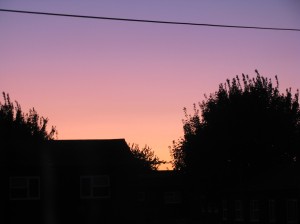
By Nik
East Anglian Scarecrows, the Crowman and the Pagan origins of saying “Grace”
By Liz
Definition of a scarecrow – That which frightens or is intended to frighten without doing physical harm. Literally that which scares away crows, hence the name scarecrow.
The Scarecrow is one of the most familiar figures of the rural landscape not only in the United Kingdom but throughout Europe and many other countries of the world. His ragged figure has been recorded in rural history for centuries.
His image has proved irresistible to writers from William Shakespeare to Walter de la Mare as well as to film makers since the dawn of the silent movie. Yet, despite all his fame, the origins and the development of the scarecrow have remained obscured in mystery.
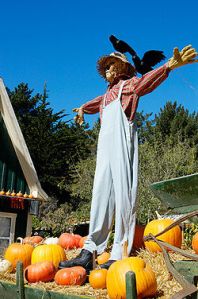
A Traditional Scarecrow from the cover of Scarecrow Fact & Fable, by Peter Haining, Published in 1986 by Robert Hale
A scarecrow is essentially a decoy, although traditionally, a human figure (or mannequin) dressed in old clothes and placed in fields by farmers to discourage birds such as crows or sparrows from disturbing and feeding on recently cast seed and tender delicate growing crops.
In Kojiki, the oldest surviving book in Japan (compiled in the year 712), a scarecrow known as Kuebiko appears as a deity who cannot walk, yet knows everything about the world.
Spending 4 years of my childhood in the early 70’s as I did living and working on a farm in East Anglia, a highly agricultural based area as it was at the time, I became very used to seeing Scarecrows in the local fields. I grew fond of them and feel sad that you don’t really see them any more these days. For me, they were as much a part of English life as red telephone boxes, red route master buses, black taxi cabs, and red letter boxes, all part of the turning Wheel of the Year, all part of the cycle of life – death – rebirth. A symbol of fertility and of hope. Scarecrows were made from two wooden poles tied together in the form of a cross. The head was usually a potato sack stuffed with straw, dressed with discarded clothes from the farmers’ family, the scarecrow was traditionally made every year around the end of July beginning of August.
The East Anglian farmers knew that around the third week of August was the best time of year to plant their beets, onions, turnips, and other rootcrops, along with planting out seedbeds and flower gardens. Then, around the bank holiday weekend, they would sow grains, winter wheat, oats, rye and flowers, plus other days in September for carrots. Of course, all of this brought the hungry crows down out of the trees. The work of the scarecrow was very important because it helped to safeguard the farmers yield and put food in the mouths of the villagers.
In the United Kingdom, where the use of scarecrows as a protector of crops date from time immemorial, and where dialects were rife, they had wide range of alternative names. These include:
Tattie Bogal (Isle of Skye)
Mommet (Somerset)
Murmet (Devon)
Hodmedod (Berkshire)
Tattie bogle (Scotland),
Bodach-rocais (lit. “old man of the rooks”)
Bwbach (Wales)
Alternative names for scarecrows also include these localized versions:
Tao-tao (Philippines)
Bogle
Flay-crow
Mawpin
Mawkin
Bird-scarer
Moggy
Shay
Guy
Bogeyman
Shuft
Rook-scarer
Kelson
Espantapájaros (Spanish)
Nuffara (Maltese)
Espantalho (Portuguese)
Epouvantail (French)
Vogelscheuche (German)
Vogelverschrikker (Dutch)
Kakashi (Japanese)
Spaventapasseri (Italian)
Bijuka (Hindi)
Scarecrows appear as popular characters in Magazines, Books, Films and on television:-
L. Frank Baum’s tale The Wonderful Wizard of Oz has a scarecrow as one of the main protagonists. The Scarecrow of Oz was searching for brains from the Great Wizard. In the 1939 film The Wizard of Oz The Scarecrow of Oz was portrayed by Ray Bolger. In the 1914 film His Majesty, the Scarecrow of Oz the Scarecrow of Oz was portrayed by Frank Moore.
Worzel Gummidge, a scarecrow who came to life in a friendly form, first appeared in series of novels by Barbara Euphan Todd in the 1930s, and later in a popular television adaptation.
The Scarecrow is a character in the DC Comics universe, a classic supervillain and one of Batman’s greatest enemies.
Similar characters, known as Scarecrow and Straw Man, have appeared in Marvel Comics.
A scarecrow called Mervyn Pumpkinhead is one of the dreams who serve Dream of the Endless in Neil Gaiman’s The Sandman (Vertigo) series. Mervyn is a builder of dreamscapes as well as a caretaker or maintenance worker of sorts.
Decline is scarecrow use is due to the change of farming technology started with the industrial revolution. The hectic life of the farmer means that he doesn’t have time to even feel the earth or walk it. He sits in his combination machine i.e J.C.B. He is protected against the elements and maybe listening to music. He is high off the ground and the earth and its magical properties are lost in a kind of factory floor. The hedges have gone to make larger areas. Lots of wild life has gone but somehow ‘The Crow’ survives. The farmer of old would once a year sow his land by hand after the land had been lovingly prepared and tended.
Now this is all done by machine.
The farmer used to discard his old clothes and create a friendly chap and put him to guard his crops.
He worked and still does.
Farmers of today rarely make a Scarecrow. On talking to them young and old still have a love of them. They try electronic ones and pop up balloon types. They are still trying to find an answer as the birds soon get wise to these methods. I believe if the Scarecrow is going to do his job he has to have a mystical feel about him. The ones made by the farmers in East Anglia back in the 60’s and 70’s used to conceal certain “charms” about their person; perhaps a sprig of “lucky heather” safety pinned to their lapels, maybe a white rabbits’ foot in their waistcoat watch pocket, maybe a black swans’ feather in their cap, or whatever, but there was usually something deeper in it’s meaning than just a representation of a man in the field guarding those crops. The 1881 Household Cyclopedia of General Information gives the following advice:
Machinery of various kinds, such as wind-mills in miniature, horse rattles, etc., to be put in motion by the wind, are often employed to frighten crows; but with all of these they soon become familiar, when they cease to be of any use whatever.
The most effectual method of banishing them from a field, as far as experience goes, is to combine with one or other of the scarecrows in vogue the frequent use of the musket. Nothing strikes such terror into these sagacious animals as the sight of a fowling-piece and the explosion of gun powder, which they have known so often to be fatal to their race.
Such is their dread of a fowling-piece, that if one is placed upon a dyke or other eminence, it will for a long time prevent them from alighting on the adjacent grounds.
Many persons now, however, believe that crows like most other birds, do more good by destroying insects and worms, etc., than harm by eating grain.
—Henry Hartshorne, The Household Cyclopedia of General Information
Crows can be a substantial problem for gardens in the springtime: they can work down a row pulling up recently sprouted corn to eat the remaining seed/seedlings. In some parts of the world common methods of scaring off crows were the use of a dead crows hung upside down from a pole, the deployment of sparrow hawk decoys or even real sparrowhawks.
Modern scarecrows, though still essentially decoys, seldom take a human shape. On some farmland, highly reflective aluminized PET film ribbons are tied to the plants to create shimmers from the sun. Another approach is automatic noise guns powered by propane gas.
Here in Pembrokeshire where I live now, they seem to grow a lot of the crops under a sea of plastic membranes. It looks like the fields are flooded with water across the landscape to the unaware. One or two of the farmers still use sparrow hawks. I’ve yet to see a scarecrow doing his proper job, and it’s a real shame.
But I live in hope.
Scarecrow Festivals
Isle of Skye, Minginish. Tattie bogal event, Workshops, Scarecrow trail, Family fun Day, and Ceildh & Barn Dance happens each year. In the UK, the festival at Wray, Lancashire was established in the early 1990s and continues to the present day. In the village of Orton, Eden, scarecrows are displayed each year, often using topical themes such as a Dalek exterminating a Wind turbine to represent local opposition to a wind farm. Norland, West Yorkshire has a festival. Tetford and Salmonby jointly host one. In Teesdale, the villages of Cotherstone, Staindrop and Middleton-in-Teesdale have annual scarecrow festivals. The village of Meerbrook in Staffordshire holds an annual Scarecrow Festival during the month of May. Kettlewell in North Yorkshire has held an annual festival since 1994.[6] Scotland’s first scarecrow festival was held in West Kilbride, North Ayrshire in 2004, and there is also one held in Montrose.
In Dymchurch on Romney Marsh a man dressed as a scarecrow rode down the street annually since 1964 in celebration of local author Russel Thorndike’s Dr Syn books, however in 2008 he was required to walk due to health and safety regulations.
Tonbridge in Kent also host an annual ‘Scarecrow Trail’, organised by the local Rotary Club to raise money for local charities. In the USA, St. Charles, Illinois hosts an annual ‘Scarecrow Festival’.
The ‘pumpkin people’ come in the fall months in the valley region of Nova Scotia, Canada. They are scarecrows with pumpkin heads doing various things such as playing the fiddle or riding a wooden horse. Cats and pigs made from pumpkins are also present. Hickling in the south of Nottinghamshire is another village that celebrates an annual scarecrow event. It is very popular and has successfully raised a great deal of money for charity.
A Poem By Barbara Euphan Todd
Ye Scairey-crows of dry-land,
Your little fields have bounds,
Come sail with me and you shall see,
The sun upon his rounds.
The sea-flowers bloom year out,year in,
The Plough is in the sky.
As you sail, as you sail,
And the time goes passing by,
And you will forget the fields you knew
As the times goes passing by.
Here where I live in Pembrokeshire, the good people of LLangwm used to hold an annual Scarecrow festival every June, but sadly this year it has cone to an end because the organisers are unable to find anyone keen enough to take over the running of it, despite putting out heartfelt pleas in the local press and other means of contacting people. I for one will sadly miss it.
Something a lot of folk don’t know is a long time ago, back in the 1800’s, there used to be real life human scare crows, called crow men. These men would be employed by the farmers to keep their crops safe from hungry birds. It was believed they had special magickal skills and powers and that they could literally “charm” the birds to stay away. Their skills were much sought after and the good ones rose in status to the elevation of almost God-like standing because if they failed the villagers starved. It put them in a very powerful position and if they turned up at the farm expecting hospitality no farmer could refuse. It was believed that every meal successfully put on the table meant another reason to thank the crow man. It is easy to conclude that this was the Pagan origins of saying Christian Grace.
Real life crow men were replaced with the wooden pole variety when war broke out and all the labour went into the military.
Back to Top
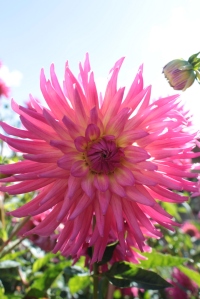
Floral Treat by Cai Thomas
Origins of Writing: Magic or Accountancy?
By Christopher Josiffe
Introduction
It is striking to note that myths from many of the ancient world’s cultures ascribe a divine or supernatural origin to the art of writing. Thus, Nisaba, the Sumerian goddess, was patroness of scribes and writing, as was the Babylonian Nabu. According to another Sumerian myth, Inanna and Enki: the Transfer of the Arts of Civilization from Eridu to Erech (translated by Kramer, 1972, pp.64-65), it is the god Enki who gave the arts of woodworking, metalworking and writing, (together with many other skills necessary for civilization) to the goddess Inanna, and thence to humankind. The Egyptian Thoth was said to be the inventor of writing, and the Egyptian word for ‘writing’ (m.d.w-n.t.r) may be translated as “the speech of the gods”. According to the Norse tradition, Odin hung on the world tree Yggdrasil for nine days, and by this ordeal was granted the secret of the runes, which he then gave to humankind. The Irish deity Ogma is associated with the invention of writing, the Ogham alphabet being named after him. The mythical Chinese god-king Fu Xi is credited with the invention of writing, as is Brahma, who, in the Hindu tradition, is said to have given the secret of writing to humankind. Gelb (1952, p.252) noted: “Everywhere, in the East as well as in the West, the origin of writing is ascribed to a divinity.”
This article will seek to demonstrate that, whilst the origins of the Sumerian writing system are closely connected to an emergent trade economy (and thence the need for a written method of accounting), there may have been alternative driving forces – namely, magico-religious imperatives – which led to the development of other ancient writing systems. Early Chinese (‘oracle-bone’) scripts, and the ‘Old European’ script of the Balkan Vinča culture, will be examined.
To begin with, it would perhaps be as well to establish what is meant by ‘writing’. Gelb (1952, p.11) differentiated between what he styled the “semasiographic stage of writing (expressing meanings and notions loosely connected with speech) and the phonographic stage (expressing speech)”. He argued that general linguists, having defined writing as a method of recording spoken language by means of certain marks (whether they be on clay, stone, wood, paper etc), and seeing such a method as being a faithful representation of its spoken equivalent, were unable to appreciate the development of writing from its earliest stages. They failed to understand that such a definition could not be applied to writing at its very earliest stages, where the marks only loosely approximated the spoken language. Similarly, he criticized philologists, who (he claimed) believed that writing, even after the introduction of phonetization, was still used to record both sounds and ideas. In fact, Gelb claimed, once humankind had established a method of exactly recording spoken speech in a written form, writing then lost its independent character and became ‘simply’ a substitute for speech.
It follows from this that Gelb regarded certain ideographic systems (such as that of North American Indians) as not being ‘proper’ writing as such, if defined as a system which faithfully represents speech phonetically. He differentiated between what he calls ‘primitive’ writing systems and more sophisticated ones, by looking for a ‘full phonetic system’. But the mere appearance of some sporadic phonetic elements (e.g. Yoruba cowrie shells) is not on its own evidence of a ‘high level’. Neither is a system’s sophistication and elaboration evidence on its own of its being ‘true writing’. Gelb argued (1952, p.56) that whilst the Mayan and Aztec systems are on a ‘higher level’ than their North American counterparts, they were, nevertheless, not ‘true writing’, since they lacked the full phonetic element:
“The best proof that the Maya writing is not a phonetic system results from the plain fact that it is still undeciphered. This conclusion is inescapable if we remember the most important principle in the theory of decipherment: A phonetic writing can and ultimately must be deciphered if the underlying language is known.”
However, it should be noted that the Mayan languages are still spoken in the present day, and are therefore “known” languages. Furthermore, it is no longer the case (as it was in 1952) that the Mayan script remains undeciphered; the last 40 years have seen major breakthroughs, following, in particular, the academic conference Mesa Redonda de Palenque, held at the Mayan site of Palenque in 1973. It is now possible to read and understand the majority of Mayan writings. These successes were kick-started, ironically, by a work published in 1952, Yuri Knorozov’s Ancient Writings of Central America.
The general thesis of Knorozov’s paper was that early writing systems such as Egyptian hieroglyphs and Sumerian, hitherto believed to be predominantly logographic or even ideographic in nature, were in fact possessed of a significant phonetic component. The Mayan system is now known to be a logosyllabic one, that is, an individual glyph may represent either a word or a syllable. But it is the phonetic element which conforms to Gelb’s criteria of ‘true writing’.
Hooker (1990, p.6) restated the point that pictographs in themselves do not constitute writing as such: “Pictographs have no linguistic reference of any kind; they depict an event, or convey a message, by means of a series of drawings. Such a medium can hardly be called writing.” Nevertheless, he does appear to part company with Gelb, who drew a sharp distinction between what he termed ‘primitive’ and ‘complex’ systems. Hooker (ibid) wrote that “so-called ‘primitive’ societies using pictographs may be just as complex in their modes of thought as users of other methods but it is a different order of complexity” and argued that pictograms were developed mainly amongst hunting or farming societies (e.g. North American Indians), whereas the ‘other methods’ tend to develop in urban societies with more advanced technologies (e.g. Sumer). Whether pictograms may be regarded as the precursors to writing proper, or whether logograms developed independently of pictograms is still a matter for debate. Hooker noted that the Egyptian (1st Dynasty; c. 3,100 BC) Narmer Palette features both. It is interesting to note that, in his research into the earliest writing of Mesopotamia (4th millennium BC: Uruk IV site), Falkenstein (1936) observed that purely pictographic signs were rarely employed; ideographic-abstract signs being far more common.
The earliest stages of the Sumerian system have been subjected to close scrutiny, and it is now generally accepted that – following Denise Schmandt-Besserat’s pioneering studies – the need for a means of accountancy was a determining factor in the origin of Mesopotamian written language.
Mesopotamian writing systems & Schmandt-Besserat
Schmandt-Besserat is strongly associated with the economic theory of writing origin, following her investigations into the clay tokens which are found in such profusion throughout the ancient Near East. Amiet (1966) had first proposed the idea that these tokens represented some form of recording system, but Schmandt-Besserat went on to develop and expand this theory. She described (1992, pp.7-8) finding these tokens, by chance, amongst:
“.Near Eastern archaeological clay collections dating from 8,000 to 6,000 BC stored in museums of the Near East, North Africa, Europe, and North America.[where] I.came across a category of artefacts that I did not expect – miniature cones, spheres, disks, tetrahedrons, cylinders, and other geometric shapes. The artefacts were made of clay.some were in the shape of animals, vessels, tools and other commodities.I sensed that the tokens were part of a system because I repeatedly found small and large cones, thin and thick disks, small and large spheres, and even fractions of spheres, such as half and three-quarter spheres. But what were they for?”
She also examined a hollow clay ‘tablet’, dated to the second millennium BC, discovered at Nuzi, a site in northern Iraq, which bore a cuneiform inscription, reading:
Counters representing small cattle:
21 ewes that lamb
6 female lambs
8 full-grown male sheep
4 male lambs
6 she-goats that kid
1 he-goat
3 female goats
The seal of Ziqarru, the shepherd
(Rudgley, 1998, p.50)
Upon further inspection, the object was not a tablet, but rather, a clay envelope that contained 49 clay counters. This sum corresponded to the total number of animals inventoried in the inscription on the outside. It then became clear to Schmandt-Besserat that this constituted some form of accounting system, and she connected the counters found inside the envelope with those tokens found in huge quantities all over the Middle East and Turkey. Over the next 15 years, she made this her main area of study, setting out a large body of supporting evidence for her theory that this system of accounting tokens was the precursor for both the earliest forms of writing (the Uruk archaic texts) and of a written numerical system.
She differentiated between two types of token, the first being those more simple forms, dating from c. 8,000 to 4,400-4,300 BC, which she termed plain tokens, nearly always composed of clay, between 1 and 5 centimetres wide, and forming geometric shapes such as spheres, cones, disks and so on. The second type, termed complex tokens, were of a later date, beginning to be created from 4,400 BC onwards.
The plain tokens were associated with commodities, so that the conical type of token represented a measure of grain, the ban (approximately a litre), and the sphere, a larger measure of grain, the bariga (approximately a bushel). Similarly, the cylinder represented a domestic animal, the tetrahedron, a unit of labour, and so on. The complex tokens she assigned to finished products as opposed to raw materials, so that incised cones, ovoids and rhomboid tokens represented bread, oil and beer respectively (Schmandt-Besserat, 1979).
Schmandt-Besserat saw these two types of device as leading to a duality in the subsequent writing system. Plain tokens were contained within a clay envelope, which was in turn impressed with tokens. This, she argued, evolved into a representation of the quantity of items being counted, i.e. numerals. Complex tokens were hung on string with an accompanying bulla, which was itself inscribed with a stylus (the incised nature of the complex tokens making them unsuitable to be impressed onto clay). The ensuing pictographs represented the nature or quality of the items being counted; these in turn, she argued, led to the development of phonetic signs. At some time around 3,500-3,100 BC, a further development occurred, whereby “the accountants realised that the notation on the outside of the envelope made the tokens and the envelope itself redundant” (Rudgley, 1998, p.54). In other words, a tablet, suitably impressed or inscribed, would serve the same purpose; there was no need for the tokens themselves.
It should be stated that there has been some criticism of Schmandt-Besserat’s theories. Jasim & Oates (1986), whilst not disputing the validity of her interpretation, regarded it as being over-generalized, in the sense of its universal application across the entire Near East, when the evidence so far only points to her thesis being valid for certain localized sites such as Susa: “Certainly, there was no ‘universal’ system” (p.351). They also suggested that the tokens may have had different functions from those proposed by Schmandt-Besserat, noting that at Tepe Gawra, a child’s grave contained a set of alabaster spheres, implying a gaming function, and that another tomb was found to contain only marble spheres, as grave goods, implying high status objects. They asserted that:
“.we cannot assume comparable function for all small geometric objects; certainly they are not all ‘accounting tokens’, though ceremonial or ritual symbols may have had an economic derivation.” (p.352)
Whilst we may attempt to make a sharp distinction between an ‘economic’ and ‘ritual’ usage, Jasim & Oates made the sensible point that “the two functions are not necessarily as distinct as our terminology implies.” (p.355)
Nevertheless, perhaps as a result of Schmandt-Besserat’s undoubtedly exhaustive ancient Near East research, an economic origin is sometimes regarded as being the sole cause for the development of any written system anywhere in the world. As Powell (2009, p.63) observed:
“The undoubted economic character of the protocuneiform tablets has coloured general histories of writing, suggesting that all writing has appeared in response to economic behaviour.”
In opposition to such a view, Powell pointed out that Mesoamerican writing systems were developed in order to glorify its rulers, as may also be said of early Egyptian writing, and that the earliest Chinese writings were oracular in character.
Shang ‘oracle-bones’
The Chinese ‘oracle-bone’ inscriptions of the Shang dynasty (1,751-1,111 BC) constitute the earliest known writing system in East Asia, and form the basis of all later forms of Chinese writing. The so-called ‘oracle-bones’ were, in fact, either turtle shells, or the shoulder bones of oxen, and were employed in the forms of divination known as plastromancy, or scapulimancy, respectively.
These shells or bones would first be cleaned and prepared so as to create a flat surface. Indentations would then be bored into the surface at regular intervals. The shells or bones would then be subjected to intense heat by means of a heat source being inserted in one or more of the holes. This heat would induce stress fractures on the surface; the ensuing patterns would then be interpreted or ‘read’ by the diviner. It has been argued (e.g. Marshall, 2001) that there is a connection between the ‘oracle-bones’ and the 3,000-year-old Chinese I Ching or ‘Book of Changes’, used to this day by millions for the purposes of divination or for advice of a philosophical nature. Certainly, the similarity between those regular patterns produced on the ‘oracle-bones’ by the process described above, and the broken or unbroken lines which make up the hexagrams of the I Ching, is indeed a suggestive one.
This pyromancy was a relatively widespread form of divination, being attested throughout much of Asia and also in North America. The practice is perhaps very old, but the earliest evidence in China dates back to around 3,500 BC (at Fu-ho-kou-men in Liaoning), where the fractures were random. The Shang dynasty’s innovation was to produce more regular patterns by means of the drilled holes. The other singular factor is that amongst all the worldwide instances of such pyromantic divinatory practices, only the Shang Chinese made a written record of their divinations, by carving signs into the oracle-bones themselves.
The divination process would begin with the shell or bone being anointed with blood, and inscribed with the diviner’s name and the date, in a process known as the ‘preface’. The subject of the divination would then be posed. Typically, enquiries would be concerned with the health of the king and members of his royal family; the outcomes of forthcoming military endeavours; the prognosis for that year’s harvest, and so on. These enquiries were directed at ancestors as well as gods (Keightley, 1978).
Although the characters were mostly carved into the shell or bone, there are a few instances where the writing has been drawn onto the surface in red or black ink, using a brush. Keightley (1989, pp.182-184) observed that there is relatively no aesthetic component to the brush-writing:
“.the aesthetic influence of the brush appears to have been minimal; the brush-written script looks stiff and angular, resembling the carved script. That the Shang scribes could have written all their inscriptions with a brush but chose not to do so raises the interesting question of why they expended considerable time and labour to carve the characters into the bones. One cannot be sure of the answer, but two facts are suggestive. First, the diviners also carved out some of the cracks as well, rendering them deeper and more visible, and second, the diviners frequently filled the incised graphs and the cracks with red- or black-coloured pigments. These practices suggest that the carving itself served some aesthetic function – permitting the colouration of the writing – and that it may also have served some magical function in which the actual carving, by establishing a sympathy between the crack and the record, helped to “fix” or induce the desired event.”
So the act of carving the signs itself was somehow part of the magico-ritual process.
As regards the nature of the script itself, Bagley (2004, p.198) stated quite unequivocally that it was to be regarded as ‘true writing’ and not just a set of simple pictograms:
“As to the script, specialists are agreed that it is full writing at the moment when we first encounter it; that is, a Shang scribe could probably have written pretty much anything he could say.”
Similarly, Bottéro (2004, p.258) stated that “the Chinese script is obviously an original system of signs created to record an ancestral form of the Chinese language”, and, whilst pointing out the fact of its origin being problematic, still regarded the Shang ‘oracle-bone’ script as being, if not the first, then one of the very earliest such:
“First, it is hard to find any social requirements for writing prior to the Shang dynasty…Second…the graphic style of the Shang script, with its rather pictographic shape, strongly suggests a writing close to its first steps or its beginning…” (ibid).
So, until such time as earlier examples of archaic Chinese writing are discovered, it would seem to be the case that the ‘oracle-bone’ script appeared fully-formed during the Shang period.
Keightley (1989, p.184) noted the “considerable continuity” between the Shang signs and those of later Chinese scripts:
“Literate Chinese of today, untutored in oracle-bone script, would probably find much of it incomprehensible at first glance.but after only a few moments of study they would begin to identify some of the early graph forms that preceded those of the modern script.”
A pattern of development may be observed when one compares the Shang characters with those of the later Western Chou (‘greater seal’) script, the Eastern Chou (‘lesser seal’) script, and finally, the modern forms.
Keightley (1989, p.195) also suggested that “social or technological activity in the late Neolithic” may have led to the development of a writing system – the need for measurement and calculation for constructing pots, and compared this with Renfrew’s argument (1972) of a similar imperative in the Mediterranean:
“Writing in the ancient Aegean seems to have arisen partly to assist in problems of mensuration and calculation. The archaeological evidence suggests that it was indeed the cultures of the Neolithic East that were primarily concerned with such problems. For componential pot construction implies attention to scale and measurement, particularly when three-footed vessels are involved, which must be made of equal size. The parts – legs, handles, spouts, lids – have to be measured so that they will fit the vessel body.” (Keightley, ibid)
The present writer finds this argument unconvincing. Would such a requirement as measurement – admittedly important – have been the driving force for the creation of an entire writing system, rather than just a numbering system? Rather, it would seem more logical to view the oracle-bone characters as being the precursors of later Chinese scripts, and to regard early literacy in China as having been driven by the imperative of magico-ritual demands, namely divination – and as Keightley himself observed, literacy was employed for divinatory purposes 500 years before it was put to any more ‘practical’ use.
‘Old European’
Another writing system, whose origins may also lie not in economic but in religious practices, is the ‘Old European’ script espoused by the archaeologist Marija Gimbutas, and by later writers. It must be emphasized that the signs (found on pottery, and upon clay tablets) which are claimed to be ‘Old European’, are by no means universally accepted to be writing. Even if this sign system is accepted as being a written language, it is, as yet, an undeciphered one. But, as this article will hope to demonstrate, the work of Gimbutas, Winn and Haarmann builds a strong case.
The discovery, in 1961, of three inscribed clay tablets in a sacrificial pit at Tărtăria, near Cluj, Transylvania (now in Romania), ascribed to the Neolithic Vinča culture, was a perplexing one for prehistorians. Hitherto, the consensus had been that all technological and other innovations had arrived in Europe from the Near East, via diffusion (Childe, 1925, 1929). It was recognized that Neolithic cultures (e.g. the Vinča, Tisza, and Karanovo cultures) in the Balkans were the earliest in Europe to have employed techniques of metallurgy – using copper at c. 5,000 BC – but these techniques were thought to have been developed first in the Near East. Similarly, writing systems were regarded as having first arisen in Mesopotamia. So the discovery of the ‘Tărtăria tablets’ and their having being radiocarbon-dated to 5,500 BC, clearly conflicted with a Near East origin, given that Uruk IV proto-writing evolved in the later 4th millennium BC.
It should be pointed out that the early date ascribed to the Tărtăria tablets has been challenged, on stratigraphic grounds (Zanotti, 1983). But these inscriptions were by no means the only ones to have been discovered in the Balkans region. Clay tablets, bearing incised signs, found at two Bulgarian sites, Gradeshnitsa and Karanovo, were in both cases radiocarbon-dated to 4000 BC at the latest.
Regarding these incised signs, Renfrew (1999, p.193) observed:
“More than 200 examples have been described from the important settlement of the Vinča culture at Tordos in Romania. Some of them are very simple – just a few strokes on the base of a pot, or a straightforward cross; others show more complicated motifs.”
Whilst the simpler forms might be thought to have been potter’s marks, it was these “more complicated motifs” that aroused the interest of Gimbutas, described by Renfrew (1999, p.193) as “the leading American authority on the prehistory of eastern Europe.” She used the evidence of widespread incised signs found at these early Balkan Copper Age sites, together with accomplished sculptures, mainly depicting female figures – upon which signs were often inscribed – to posit a sophisticated matrifocal Old European Neolithic culture in existence between c. 7,500 and c. 3,500 BC.
Certainly the figurines are predominantly representative of the female form. Markotić (1984) stated that, of 558 figurine discoveries attributed to the Vinča culture, 541 depicted females. Whether these figurines represented goddesses or ordinary human females is uncertain, although Gimbutas (1991, p.308) insisted that these objects were religious in nature:
“Votive offerings – gifts to the divinity in accordance with a vow, a wish, or desire – inscribed on religious objects usually found in clusters or rows, are characteristic finds of the Neolithic and Copper Ages, particularly in east-central Europe.”
Whilst noting that: “the invention of a script some eight thousand years ago has seemed so unthinkable that to this day the possibility is ignored and its evidence given very little attention” (1991, p.308), Gimbutas went on to declare that:
“Although the Sumerians are generally thought to be the inventors of written language, a script in east-central Europe appeared some two thousand years earlier than any other that has yet been found. Unlike Sumerian script, the writing of the Old Europeans was not devised for economic, legal or administrative purposes. It was developed, instead, from a long use of graphic symbolic signs found only within the context of an increasingly sophisticated worship of the Goddess. Inscriptions appear on religious items only, indicating that these signs were intended to be read as sacred hieroglyphs.” (ibid)
These claims may seem incredible to some, but it should be noted that Gimbutas, although the first to portray the many archaeological finds in the Balkan region as being representative of a coherent whole Old European civilization, is not alone in her claims. Winn undertook what is still the most comprehensive study of the Vinča signs for his 1973 dissertation (later published in 1981). It features an extensive sign catalogue, incorporating hundreds of examples from 50 sites identified as belonging to the Vinča culture. 210 basic sign types were identified (Winn, 1981, pp.60-65), which could be subdivided into 18 categories, and further classified as belonging to five core signs – (1) a straight, unbent, unbroken line; (2) two straight lines intersecting at the centre; (3) two lines intersecting at one end; (4) a dot or stipple; and (5) a curved line.
The signs – inscribed on pottery, figurines, spindle whorls, and other more unusual objects, sometimes unidentifiable – were sometimes found in isolation, or as part of a sign group. Arguing against an identification of isolated signs as mere potter’s marks, Winn (1981, p.13) noted:
“Isolated signs are found more frequently on pottery, but they may also occur on figurines, rarely on spindle whorls and occasionally on other subjects. Some of the basic sign types appear restricted to figurines and/or whorls. Therefore, these signs cannot be identified as mere pot marks.”
Winn (1981, p.14) also distinguished between mere decorative, aesthetic elements found on the objects, and the signs proper: “A distinction has been made between decoration and signs on the basis of their integration into overall ornamentation or independence from decoration”. He claimed that it was easy to tell which was which, although in some cases, a few decorative elements resembled signs (e.g. the ‘M’ sign, to which Popović and Gimbutas ascribed a religious meaning). He theorized that these had more than just an aesthetic value, with a symbolic meaning also, such that they may have formed the basis for the later origin of the signs proper (1981, p.12): “In a minority of cases the signs may be influenced by decorative prototypes, as there are certain decorative elements which may be related to the origin of signs.” Interestingly, one decorative element identified by Winn, organized or deliberate scratch marks, was found in abundance at one site, Jela (in modern Croatia), at the very northwest limit of the Vinča culture’s sphere of influence. He suggested that these scratch marks had been made as mimicry of the signs themselves, in imitation of an admired culture (one thinks of Romano-British coinage, where British chieftains sought to emulate Roman coins, reproducing the design whilst not understanding the script).
Winn (1981, p.76) also observed that the signs were inscribed on various parts of the objects: on the rim or upper body; on the lower side near the base; and on the base itself. In his catalogue, these various locations formed a further means of classification. It was noted that certain signs, or groups of signs, tended to be found on certain parts of the objects. For example, the Tordos signs were found to occur “in very high proportions on the base” whereas pictograms were found “principally on the body” of the objects:
Arguing against their identification as mere potter’s marks, he wrote (p.79):
“It is difficult to understand why more complicated signs.should be placed on the base. The general view, of course, has been to dismiss them as proprietary marks, but in my estimation this is an over-simplification. Certainly, some may be proprietor’s marks, but this view does not provide an adequate explanation for the majority of recurring signs. These signs are noted at various sites and do not seem to be intuitively distinguishable for such a basic purpose as ownership, where owners could hardly be cognizant of identical signs elsewhere, unless the identity was entirely the result of chance or there were certain standardized signs, which then must have had an attached concept with which the owner was familiar when he utilized the sign as a pottery mark.”
Instead, Winn maintained that the above observations denoted “purposeful distinctions in sign usage and, therefore, an intention to communicate something meaningful”, concluding (p.235) that the signs form a “conventionalized and standardized” semiotic system, rather than individual signs being merely discrete magical symbols (p.267):
“The suggestion that the signs represent nothing more than magical marks is untenable, although some simple signs, particularly on pottery vessels, may have been inscribed as part of magical formulae. The evidence shows deliberate sign usage at various sites according to object and function; this usage over space and time illustrates its meaningfulness in the world view of the society.”
Whilst the system could not be termed ‘true’ writing, on account of insufficient attestations of group sign repetition, Winn nevertheless argued against its being, fundamentally, a pictographic one – the majority of signs being abstract linear ones which occur alongside earlier pictographic signs, which in turn have been observed in isolation, at the earlier Tordos site. Thus the Vinča system may have developed from an earlier pictographic one, much like the development of Sumerian logograms and syllabograms.
Regarding the origin and source of the Vinča signs, this has been the source of much debate. Following the discovery of incised signs from the Tordos site in 1879 (during Zsofia Torma’s excavations of this very large site, yielding some 10,000 objects, from 1875-1891), and others found during the first Vinča excavation by M. Vasić in 1908, it was the general view that the script must have arrived in the Balkans by means of diffusion from elsewhere. Torma (1889) argued for an Assyro-Babylonian influence. The prevailing view at the turn of the nineteenth century was that early Troy and early Dynastic Egypt shared a common script. Vasić (1908) argued firstly for a Trojan influence, and then later suggested (1957) that there had been an Ionian colony at Vinča. And the enormously influential V. Gordon Childe (1927, p.83) claimed “an ethnic connexion between the first settlers at Vinča and the peoples of the Aegean”, also noting (p.88) analogies between the cultures of predynastic Egypt, Troy, and Vinča.
However, the application of C-14 radiocarbon dating techniques in the 1950s, which gave a date of 4,240 BC to the earliest Vinča finds, meant that such ‘diffusion’ theories of origin were untenable, the earliest date for the foundation of Troy being at least 1,000 years later. Whilst the implications of these startling dates were still being assimilated, the discovery in 1961 of the three Tărtăria tablets added further controversy. The excavator, N. Vlassa (1963) drew attention to the Tărtăria signs’ similarity with those of the Uruk IV and Jemdet Nasr tablets (late fourth to third millennia BC), a view with which Falkenstein agreed (1965). Vlassa claimed the earliest level of the Tărtăria site to be no older than 2,700 BC, this making a Mesopotamian origin tenable. Other writers such as Popović (1965), Hood (1967) and Makkay (1969) concur. Popović, taking a similar view to Gelb, does not regard the Balkan civilization to be sufficiently advanced as to develop a system of writing, and thus claims a Sumerian origin. Hood also adheres to a Childe-like diffusionary theory, arguing that the magico-religious attributes of the Vinča signs may have resulted from religious conversion via Near East influences. And Makkay (1969, p.14) compiled a list which compared Vinča signs with those of Mesopotamia, admitting that he is compelled to make such Near East connections for want of any possible European influences. Nevertheless, the Tărtăria signs aside (which this writer considers to be something of a red herring, on account of their debatable date (see Zanotti, 1983) and similarity with Jemdet Nasr/Uruk IV pictograms), there is clearly a problem for an ex oriente lux argument, given that C-14 dating ascribes a date of 4,240 BC to the earliest Vinča finds. Indeed, with radiocarbon calibration (the method by which a more accurate date may be found), an additional 500-800 years must be added, so that the dates are pushed back still further! Accordingly, we are faced with a well-established Balkan civilization flourishing in the 5th millennium BC, reaching its pinnacle around 4,000 BC, with its decline or destruction coming some time in the 4th millennium.
As noted above, Winn argued that the Vinča signs were derived from five core elements. Noting the prevalence of such signs as the zigzag or meander, the spiral, and the cross or X, he further noted (1981, p.237) that “such signs/motifs can be considered symbolic: fertility, good fortune or welfare, duty, water, etc.The association of such symbolic decoration with figurines is clear”. Gimbutas (1991, p.314) claimed a Palaeolithic provenance for certain core Vinča signs:
“Independent abstract signs, not pictographs, such as V, X, and Y, originated during the Upper Palaeolithic. A number of them, engraved on stone, bone, and antler, continued through the Mesolithic into early phases of the Neolithic. In Old Europe and Anatolia they consistently recur on ceramics in various arrangements: duplicated, triplicated, multiplied, inverted, opposed, and associated with meanders and parallel lines. Some signs are continuous from the Upper Palaeolithic Gravettian and Magdalenian cultures into the Neolithic, Copper Age, and even early Bronze Age of Europe and Anatolia, a span of 15,000 years.”
She further attributed religious meanings to these signs; thus, the V sign was said (1991, p.315) to derive from the vulva or pubic triangle, “one of the earliest symbols known from prehistoric art…Its repetitiveness in homologous contexts speaks of its central role in the symbolism surrounding certain aspects of the Goddess.” One might, at this point, note this sign’s similarity to the Sumerian sign for ‘female’ (‘MUNUS’; Labat, 1948, no.554), although it should be noted that I am not arguing here for diffusion, an Old European influence on Sumerian; rather, that such elementary signs may have had an independent origin in different parts of the world at different periods.
Noting (p.315) that “multiple V’s or chevrons appear consistently on both articulate and schematic effigies of the Bird Goddess, and on objects associated with her veneration, such as ornithomorphic vases…”, Gimbutas observed (p.316) that:
“Examination of the repertory of symbols on figurines leads to several observations. Signs surrounding the image of the Bird Goddess, for example, (such as V’s and chevrons combined with X) identify her, while V’s associated or connected with meanders, zigzags, or parallel lines emphasize her intimacy with the aquatic life-giving sphere, suggesting her function as a giver of moisture and life waters.I believe that the Old European sign system developed into a script from extensive use of very ancient symbolism. It is possible that certain symbols could have had a phonetic sound much earlier than the 6th millennium B.C.”
One might note that the Sumerian sign for ‘water’, (‘A’; Labat, 1948, no. 579) in its very earliest forms (e.g. Jemdet Nasr or Uruk IV periods) resembles a zigzag. Rudgley argued that the zigzag’s association with water had a very early origin (1991), citing Marshack’s (1972, 1976) detailed examination of deliberate marks found on Upper Palaeolithic animal bones – in particular, the discovery of a zigzag on a fragment of bone found at a Mousterian site (Bacho Kiro, Bulgaria), suggesting a possible Neanderthal date.
Naturally, the idea that writing may ultimately have a Palaeolithic origin is very problematic, and has met with opposition by some in the academy. Forbes and Crowder (1979, p.359) wrote:
“The proposition that Ice Age reindeer hunters invented writing fifteen thousand years ago or more is utterly inadmissible and unthinkable. All the data that archaeologists have amassed during the last one hundred years reinforce the assumption that Sumerians and Egyptians invented true writing during the second half of the fourth millennium. The Palaeolithic-Mesolithic-Neolithic progression to civilization is almost as fundamental an article of contemporary scientific faith as heliocentrism. Writing is the diagnostic trait, the quintessential feature of civilization. Writing, says I. J. Gelb, ‘distinguishes civilized man from barbarian’. If Franco-Cantabrians [i.e. Ice Age European peoples] invented writing thousands of years before civilization arose in the Near East, then our most cherished beliefs about the nature of society and human development would be demolished.”
This is not to say that a Neolithic origin is any less controversial! Winn himself was unable to bring himself to describe the Vinča signs as true writing – hence, when his 1973 dissertation, The Signs of the Vinča Culture was published in 1981, it was titled Pre-Writing in Southeastern Europe: The Sign System of the Vinča Culture [my bold]. Winn was unable to determine the Vinča system to be a logographic one, due to the insufficient attestation of long strings of signs – whilst qualifying this with the cautious remark (1981, p.238) that “the system may be partially logographic, i.e. some of the signs may represent words or concepts.” Neither was he able to describe it as a phonemic one, and therefore concluded that it was a system of pre-writing rather than writing proper.
In a linguistic study, Haarmann (1995) examined the Vinča sign system, in comparison with those of ancient Mediterranean civilizations such as that of Crete – Linear A & B – and the Cypro-Minoan script. He noted Winn’s refusal to ascribe ‘true writing’ status to the Vinča signs, but pointed out Winn’s adherence to an American definition of writing (Haarmann, 1995, pp.31-32): “[i]n American terminology, “true writing” or “full writing” is reserved to mean ‘phonetic writing of some sort'” He suggested that instead of ‘pre-writing’, the term ‘nuclear writing’ be used to describe early writing systems which, whilst essentially logographic, were not yet phonetic.
Haarmann (1995, p.28) believed that the Vinča signs comprised a ‘sacred script’, a genuine writing system, albeit one as yet undeciphered:
“The close relationship to objects which were used in burial rites or magico-religious rituals, that is, votive offerings and cult vessels, and the presence of inscribed objects with a potential usage such as offering gifts in the residential areas of the Chalcolithic settlements is indicative of a sacred function of the Old European script.”
Renfrew (1999, p.204) refused to ascribe to the Vinča signs the status of ‘true’ writing:
“To call these Balkan signs ‘writing’ is perhaps to imply that they had an independent significance of their own, communicable to another person without oral contact. This I doubt.”
Rather, he compared them to the signs on the rongorongo wooden tablets of Easter Island (sacred objects surrounded by taboos), which, he argued, functioned as mnemonic aids for religious chants within an essentially oral tradition, citing Metraux (1957, p.206):
“The rongorongo of Easter Island bards used staves to augment the effects of their recitations. On these staves the engraved sacred symbols, like the notches on the staves of the Maori orators, may originally have been aids to memory; later the decorative or mystic aspect of the symbols gained over their pictographic significance.We may suppose that the signs were arbitrarily associated with chants, each symbol representing a significant word, a phrase, a sentence or even a verse.”
In a comparison with the Vinča script, Renfrew (1999, p.204) argued that the rongorongo tablets demonstrate how an elaborate sign system might arise in a “relatively small society, which, despite its hierarchy, had no permanent central bureaucracy, and no full-time specialists.”
However, he also suggested that, further comparing the rongorongo tablets with the Vinča script, we may infer the latter to have had mnemonic value only, rather than being anything so sophisticated as ‘true writing’ by which ideas might be communicated to any other party who was able to understand the script. And, citing those Vinča signs that are found inscribed on pottery, Renfrew compared them with potters’ marks from other cultures and periods, for example, those of Phylakopi in the Cyclades, c. 2,000 BC. These, he argued (1999, p.204), were merely a “private code, significant only to the potter who made [them].carrying a meaning only at the moment they were made.” This seems an unfair comparison, when one recalls Winn’s extensive catalogue of the Vinča signs; from the thousands of occurrences found in museums in Europe and the US, he identified recurring attestations of 210 signs, which themselves could be analysed as belonging to one of five core sign groups. Further, these signs had been found at sites with a wide distribution throughout the Balkans region, not one single local area. Clearly, the Vinča signs were not merely a “private code.”
By way of contrast, Renfrew (1999, p.204) noted that “the writing of the Near East, like that of Crete, grew up in another context, that of the emerging palace economy, with the need to record in- and out-payments and to indicate ownership.” In such an emerging trade economy, the need for written signs which form a codified system which may be readily understood by others, without the need for oral explication, is clear. The agricultural society of the Vinča culture had no such economic imperative, and as Renfrew pointed out (ibid), in terms of archaeological discoveries, “there is no evidence for a redistribution system like that of early Bronze Age Greece, where the seals and sealings were functional objects of real economic significance.” Instead, the inscribed figurines and tablets of the Vinča culture:
“.testify to a very real absorption in religious affairs: and it is in this context that the signs on the tablets and plaques have to be understood. I suggest, indeed, that this “writing” emerged in a religious context, not an economic one.”
Thinking of the Vinča signs as mnemonic devices, aides-memoires for participants in religious ceremonies (as per the Easter Island rongorongo tablets), Renfrew compares them with Navaho sand paintings, which were designed according to strict conventions and laden with symbolism, were made specifically for use in a ceremony, after which they were destroyed. Had they, he suggested (p.204): “.been in a permanent medium they would have been – like the Balkan tablets – enduring repositories of symbolic information, indeed a form of writing.” So the Vinča signs may also be a ‘form of writing’, although:
“.while we can agree with the Bulgarian scholar Vladimir Georgiev that these Balkan signs had an independent origin and held a real meaning for those who made them, to talk of writing, without careful qualification, may not be appropriate.”
Renfrew’s refusal to view the Vinča signs as comprising a script has been criticized (Haarmann, 1995, p.77), on the basis that “his opinion was based on scarce iconic material in the first place, and [that] he [had] inspected only a few specimens of Old European writing then known.” Winn’s investigation, involving the analysis of thousands of inscribed figurines and other objects, was far more rigorous. Perhaps Renfrew hesitated to talk of the Vinča signs as being ‘true writing’, because of the fantastical and unacceptably unorthodox implications of a writing system from Europe which pre-dated that of Mesopotamia by several thousand years.
The language spoken by these Neolithic Balkan peoples is totally unknown to us today. It was not an Indo-European language, since, according to Gimbutas’ hypothesis, Kurgan invaders from the Russian steppe first brought an early Indo-European language to Europe, when they over-ran the Balkans and displaced the ‘Old European’ civilization and peoples. (For a geneticist’s findings which lend support for this theory, see Cavalli-Sforza, 1997). We are thus unable to map the Vinča signs (as written language) against a spoken counterpart. Therefore, Gelb’s distinction between a ‘semasiographic stage of writing (conveying meanings and concepts loosely connected with speech) and phonographic stage (expressing speech) is inapplicable – since we are unable to say whether the signs merely conveyed certain ideas and notions that were expressed by the spoken language, or whether they directly expressed speech (e.g. phonetically). It will be recalled that Gelb would only ascribe the status of ‘true writing’ to a phonetic system. It does seem unlikely that the Vinča signs are phonetic representations of a spoken language; there do not seem to be sufficiently lengthy ‘strings’ of signs (as one observes in, for instance, Sumerian tablets), so are they more likely to have been pictographic or ideographic in character?
Again, one recalls Hooker’s argument that a purely pictographic system is not ‘true writing’, since it depicts an event or message by purely visual means, rather than referring to any linguistic content; this also reminds us of Falkenstein’s observations (1936) that the earliest Mesopotomian signs (at Uruk IV) were seldom pictographic in character. Whilst we cannot be certain, it would seem likely (for the reasons stated above) that the Vinča signs are pictographic or ideographic, rather than syllabographic. Nevertheless, Hooker refused to follow Gelb’s lead in distinguishing between ‘primitive’ and ‘complex’ writing systems. He argues that pictograms were developed mainly amongst hunting or farming societies. So, in this sense we may claim a highly developed ‘order of complexity’ for the Vinča system, whilst not according it the status of writing. Hooker wrote (1990, p.6) that “so-called ‘primitive’ societies using pictographs may be just as complex in their modes of thought as users of other methods but it is a different order of complexity”, arguing that pictographic systems tended to arise in hunting or farming societies rather than urban ones – like the Balkan ‘Old European’ civilization.
Conclusion
As noted above, there is disagreement as to whether the Vinča signs may be regarded as constituting ‘true writing’ or not. Winn ascribed to them the status of ‘pre-writing’, and Renfrew, by way of comparison with the rongorongo tablets, suggested that their function was a mnemonic one, an aide memoire for oral religious practice. Haarmann and Rudgley, however, insisted that the signs were a fully-fledged – if as yet undeciphered – writing system.
It should also be stated that Gimbutas has been criticized in some quarters. Such criticism tends to focus on the speculative nature of her theories – based on an ‘archaeo-mythological’ approach – which posited the existence of a peaceful, artistic and matrifocal ‘Old European’ civilization. Partly because the script (if it is indeed a script) remains undeciphered, it could be asserted that her ideas concerning the wider ‘Old European’ culture lack foundational evidence to support them (although see Cavalli-Sforza, 1997). In addition, it has been argued that her theories were motivated by a desire to promote a feminist agenda (e.g. Hayden, 1986; Sommers, 1995), although for stout rebuttals of such criticism, see Christ, Goldenberg & Spretnak (all 1996).
However, whether or not one accepts the existence of the ‘Old European’ civilization as described by Gimbutas, the existence of a Vinča sign system is surely incontrovertible (following Winn’s rigorous and scholarly analysis).
Notwithstanding the above controversies, Winn, Renfrew and Haarmann are all in agreement that the signs originated in a ritual-ceremonial-religious domain, rather than an economic one. The same may also be argued as to the development of early Chinese scripts, namely, that the motivation was magico-religious in essence (i.e. divination) rather than economic. For this reason, both Renfrew and Haarmann compared the Vinča script with that of the ‘oracle-bones’. As noted above, the act of carving the ‘oracle-bone’ signs itself was a part of the magico-ritual process, so perhaps a tentative analogy might be drawn with the Vinča signs – particularly those carved on figurines which apparently depict goddesses.
However, until such time as a Rosetta stone equivalent is discovered, bearing the Vinča characters alongside those of another (known) script, the former will continue to remain the subject of speculation as to their nature and meaning. But, whether we accept the Vinča script as being ‘true writing’ or not, it is, I believe, reasonable to regard religion rather than economics as the driving force behind the ‘invention’ of the signs. As Winn (1981, p.255) concluded:
“In the final analysis, the religious system remains the principle source of motivation for the use of signs. The thousands of [inscribed] excavated figurines impressively demonstrate the cardinal role of domestic ritual in Vinča society.”
With thanks to Professors Mark Geller and Andrew George, for their suggestions and advice. And thanks to NISABA, Goddess of writing and learning.
BIBLIOGRAPHY
AMIET, P., 1966a, Elam, Archée Editeur, Auvers-sur-Oise.
AMIET, P., (1966b), ‘II ya 5000 ans les Elamites inventaient l’écriture’, Archeologia, 12, 16-23.
BAHN, P., 1983, Pyrenean prehistory: a palaeoeconomic survey of the French sites.
Aris & Phillips, Warminster.
BAGLEY, R., 2004, Anyang writing and the origins of the Chinese writing system. In:
HOUSTON, S. (ed.) The first writing: script invention as history and process, Cambridge University Press, Cambridge, pp.190-249.
BARBER, E. J. W., (1989), ‘Archaeolinguistics and the borrowings of Old European technology’, Journal of Indo-European Studies, 17, 239-250.
BOTTERO, F., 2004, Writing on shell and bone in Shang China. In:
HOUSTON, S. (ed.) The first writing: script invention as history and process, Cambridge University Press, Cambridge, pp.250-261.
CAVALLI-SFORZA, L. L., 1997, Genetic Evidence Supporting Marija Gimbutas’ Work on the origins of Indo-Europeans. In: MARLER, J. (ed.) From the realm of the ancestors: an anthology in honor of Marija Gimbutas, Knowledge, Ideas and Trends, Manchester CT., pp. 93-101.
CHANG, K. C., 1983, Art myth & ritual: the path to political authority in ancient China, Harvard University Press, Cambridge MA.
CHILDE, V. GORDON., 1929, The Danube in prehistory, Clarendon, Oxford.
CHILDE, V. GORDON, (1927), ‘The Danube thoroughfare and the beginnings of civilization in Europe’, Antiquity, 1, 79-91.
CHILDE, V. GORDON., 1925, The dawn of European civilization, Routledge, London.
CHRIST, C. P., (1996), ‘”A different world”: the challenge of the work of Marija Gimbutas to the dominant world-view of Western culture’, Journal of Feminist Studies in Religion, 12 (2), 53-66.
DANIELS, P. T. & BRIGHT, W. (eds.), 1996, The world’s writing systems, Oxford University Press, Oxford.
FALKENSTEIN, A., (1965), ‘Zu dem Tontafeln aus Tărtăria’, Germania, 43, 269-273.
FALKENSTEIN, A., 1936, Archaische Texte aus Uruk, Deutsche Forschungsgemeinschaft, Berlin.
FORBES, A. & CROWDER, T. R., (1979), ‘The problem of Franco-Cantabrian abstract signs: agenda for a new approach’, World Archaeology, 10 (3), 350-366.
GELB, I. J., 1952, A study of writing: the foundations of grammatology, Routledge, London.
GERNET, J., (1959), ‘Ecrit et histoire en Chine’, Journal de Psychologie Normale et Pathologique, 56, 36-38.
GIMBUTAS, M., 1991, The civilization of the Goddess: the world of old Europe, Harper, San Francisco CA..
GIMBUTAS, M., 1989, The language of the Goddess, Thames & Hudson, London.
GOLDENBERG, N. R., (1996), ‘Memories of Marija Gimbutas and the King’s archaeologist’, Journal of Feminist Studies in Religion, 12 (2), 67-72.
HAARMANN, H., 1995, Early civilization and literacy in Europe: an inquiry into cultural continuity in the Mediterranean world, de Gruyter, Berlin.
HAYDEN, B., 1986, Old Europe: sacred matriarchy or complementary opposition? In: BONNANO, A (ed.) Archaeology and fertility cult in the ancient Mediterranean, B.R. Gruner, Amsterdam, pp.17-30.
HOOD, M. S. F., (1967), ‘The Tărtăria tablets’, Antiquity, 41, 99-102.
HOOKER, J. T., 1990, Introduction. In: Reading the past: ancient writing from cuneiform to the alphabet, British Museum Press, London, pp.6-13.
JASIM, S. A. & OATES, J., (1986), ‘Early tokens and tablets in Mesopotamia: new information from Tell Abada and Tell Brak’, World Archaeology, 17 (3), 348-362.
KATIČIĆ, R., 1976, Ancient languages of the Balkans, 2 vols., Mouton, The Hague.
KEIGHTLEY, D., (1996), ‘Art, ancestors, and the origins of writing in China’. Representations, 56, (Special Issue: The New Erudition) 68-95.
KEIGHTLEY, D., 1989, The origins of writing in China: scripts and cultural concepts. In: SENNER, W. (ed.) The origins of writing, University of Nebraska Press, Lincoln NE, pp.171-202.
KEIGHTLEY, D., 1978, Sources of Shang history: the Oracle-Bone inscriptions of Bronze Age China, University of California Press, Berkeley CA.
KNOROZOV, Y., (1952), ‘Drevnyaya pis’mennost’ Tsentral’noy Ameriki [Ancient writings of Central America]’. Sovetskaya Etnografiya, 3 (2), 100-118.
KRAMER. S. N., 1972, Sumerian mythology, University of Philadelphia Press, Philadelphia PA.
KRETSCHMER, P., (1940) ‘Die vorgriechischen Sprach- und Volksschichten’, Glotta, 28, 231-278.
LABAT, R., 1948, Manuel d’épigraphie Akkadienne: signes, syllabaire, idéogrammes, Imprimerie Nationale, Paris.
MAKKAY, J., (1969), ‘The late Neolithic Tordos group of signs’, Alba Regia, 10, 9-49.
MAKKAY, J., (1968), ‘The Tărtăria tablets’. Orientalia, 37, 272-289.
MARSHACK, A., (1976), ‘Some implications of the Paleolithic symbolic evidence for the origin of language’. Current Anthropology, 17 (2), 274-282.
MARSHACK, A., 1972, The roots of civilization: the cognitive beginning of man’s first art, symbol and notation, McGraw Hill, New York NY.
MARKOTIĆ, V., 1984, The Vinča culture, Western Publishers, Calgary AB.
MARSHALL, S., 2001, The Mandate of Heaven: hidden history in the I Ching, Columbia University Press, New York NY.
METRAUX. A., 1957, Easter Island, a Stone Age civilization of the Pacific, Deutsch, London.
MORPURGO DAVIES, A., 1986, The linguistic evidence: is there any? In: CADOGAN, G (ed.) The end of the early Bronze Age in the Aegean, Brill, Leiden, pp.93-123.
OPPENHEIM, A. L., (1959), ‘On an operational device in Mesopotamian bureaucracy’. Journal of Near Eastern Studies, 18, 121-128.
PETRIE, W. M. F., 1912, The formation of the alphabet, Macmillan, London.
PETRIE, W. M. F., 1896, Naqada and Ballas: 1895, Quaritch, London.
POPOVIĆ, V., (1965), ‘Une civilization égéo-orientale sur le moyen Danube’. Revue archéologique, 49, 9-24.
POWELL, B. B., 2009, Writing: theory and history of the technology of civilization, Wiley-Blackwell, Chichester.
RENFREW, C., 1999, Before civilization: the radiocarbon revolution and prehistoric Europe, Pimlico, London.
RENFREW, C., 1988, Archaeology and language: the puzzle of Indo-European origins, Cambridge University Press, Cambridge.
RENFREW, C., 1972, The emergence of civilization: the Cyclades and the Aegean in the third millennium BC, Methuen, London.
RUDGLEY, R., 1998, Lost civilisations of the Stone Age, Century, London.
SCHMANDT-BESSERAT, D., 1992, Before writing, volume one: from counting to cuneiform, University of Texas Press, Austin TX.
SCHMANDT-BESSERAT, D., 1989, Two precursors of writing: plain and complex tokens. In: SENNER, W. (ed.) The origins of writing, University of Nebraska Press, Lincoln NE, pp.27-41.
SCHMANDT-BESSERAT, D., (1986), ‘The origins of writing’. Written Communication, 3 (1), 31-45.
SCHMANDT-BESSERAT, D., (1979), ‘An archaic recording system in the Uruk-Jemdet Nasr period’. American Journal of Archaeology, 83, 19-48.
SENNER, W. (ed.), 1989, The origins of writing, University of Nebraska Press, Lincoln NE.
SNYDER, G., 1980, Minoische und mykenische Kunst. Munich, Zurich, Schnell & Steiner.
SOMMERS, C. HOFF, 1995, ‘The flight from science and reason’, Wall Street Journal, (10 July 1995), pp.A-I2
SPRETNAK, C., (1996), ‘Beyond the backlash: an appreciation of the work of Marija Gimbutas’. Journal of Feminist Studies in Religion, 12 (2), 91-98.
TORMA, Z., (1889), Mitteilungen der Anthropologischen Gesellschaft in Wien. 6, 114.
UCKO, P. & ROSENFELD, A., 1967, Palaeolithic cave art, Weidenfeld & Nicolson, London.
VASIĆ, M. M., (1957), ‘Arheologija i lingvistika’. Starinar 4: VII-VIII, 1-11.
VASIĆ, M. M., (1908), ‘South-eastern elements in the prehistoric civilisation of Servia’. Annual of the British School at Athens, 14, 319-342.
VLASSA, N., (1963), ‘Chronology of the Neolithic in Transylvania, in the light of the Tărtăria settlement’s stratigraphy’, Dacia, N.S. 7, 485-494.
WINN, S. M. M., 1981, Pre-writing in Southeastern Europe: the sign system of the Vinča culture, ca. 4000 B.C., Western Publishers, Calgary AB.
WINN, S. M. M., 1973, The Signs of the Vinča Culture: an internal analysis; their role, chronology and independence from Mesopotamia, University Microfilms, Ann Arbor MI.
ZANOTTI, D., (1983), ‘The position of the Tărtăria tablets within the southeast European Copper Age’, American Journal of Archaeology, 87, 209-213.
Christopher Josiffe works at Senate House Library, University of London, as a library cataloguer. He has a MA in librarianship, and has also studied the Ancient Near East at SOAS. He has previously been published in Faunus, the journal of the Friends of Arthur Machen Society, and the Fortean Times. His interests include: Northern Soul and roots reggae, fine cheeses and beers, and visiting prehistoric sites.
Copyright Christopher Josiffe 2011
Back to Top
MoonLore for Mabon week
By Liz
Thursday, 22nd of September 2011 Mabon Eve – The Moon will be Waning, in it’s Fourth Quarter, leaving Cancer, and entering Leo. Being a Thursday, it will be all about the money, investment, expansion, prosperity and generosity and Moon in Leo puts the spotlight on self, time to express one’s needs, to listen to one’s own ideas, to become a little introverted and reflecting, perhaps. A good day to “take stock” of one’s position in the grand scheme of things.
Friday, 23rd September 2011– Autumn Equinox – Mabon – The Moon will be Waning, in it’s Fourth Quarter, still in Leo. Being a Friday it’s going to be all about Love, Friendship, Reconcilliation and Beauty. Moon in Leo this day will draw us away from people with emotional needs. A day for not letting negativity influence your mood. A good day for some alone time. A great day for some self discovery if the fates are being kind.
Saturday 24th September 2011 – 3 Nights away from Dark (New) Moon – The Moon will be Waning, in it’s Fourth Quarter still, remaining in Leo. Being a Saturday, it will all be about Longevity, Exorcism, Endings, Homes and Houses, and Moon in Leo today warns us folk may be a little over-the-top and melodramatic. A good day to keep perspective.
Sunday 25th September 2011 – 2 Nights away from Dark (New) Moon – The Moon will be Waning, in it’s Fourth Quarter, leaving Leo and entering Virgo. Being a Sunday, it will all be about Healing, Spirituality, Success, Strength and Protection while Moon in Virgo this day reminds us it’s all in the details and fine print. Not a day for taking short cuts or papering over cracks, A day for taking care of business properly.
Monday 26th September 2011 – ! night away from Dark (New) Moon – The Moon will be Waning, in it’s Fourth Quarter, in Virgo still. Being a Monday, it will be all about Peace, Sleep, Healing, Compassion, Friends, Psychic abilities and Fertility, while Moon in Virgo this day warns us to pay attention to our health and daily routines. A good time to start a new self care regime in a less-is-more kind of way.
Tuesday 27th September 2011 – Dark (New) Moon – leaving Virgo and entering Libra. Being on a Tuesday, this Dark (New) Moon will be about Passion, Sex, Courage, Agression, and Protection, while Dark (New) Moon in Libra favours social activities and spending time with friends. A good time to have a good time.
Wednesday 28th September 2011 – 1 Day after Dark (New) Moon – The Moon is Waxing, in it’s First Quarter, in Libra. Being a Wednesday, it’s all going to be about travel and study, while Moon in Libra this day will be about balance and partnership. Learning from friends is a great way to learn.
Thursday 29th September 2011 – 2 Days after Dark (New) Moon – The Moon is Waxing, in it’s First Quarter, leaving Virgo and entering Scorpio, This being a Thursday it will be all about the money, investment, expansion, prosperity and generosity and Moon in Scorpio will mean it’s a good day for scrying, for interpreting dreams, and for other psychic endeavours. A day fro trusting your instincts and going with your gut reactions.
Back to Top
Should we take another look at the Gods & Spirits?
By Jonny Blake
When I was 13 I had a conversation with a classmate during religious studies, and he had this idea that what ancient people thought were gods were just a more advanced mortal race. Hypothetically speaking, if we discovered this was true then it would mean this ‘’fact’’ would only be comprehensible by anyone born in the last 100 or so years; as someone who wouldn’t know anything about the concept of a galaxy (and other life bearing planets) or a parallel dimension, or a species that got there before humanity in evolution back in ancient Egypt or Central America and so on. So with that ethos, I found myself re-interpreting mythology and lore throughout many pagan cultures throughout the years.
My last article ‘a new way of thinking’ ties into this one for the sake of argument (that making these speculations are mere thought and harmless to paganism and one’s chosen path), on it’s own it seems to present no purpose; but that’s my fault for being a blog newbie so sorry about that!
I’ll start with the classic alien intervention (using the name lightly as not to invoke images of green dudes) which is popular among conspiracy theorists the world over. If we take the Egyptians who are usually chosen under this theory next to the Mayans and Sumerians, what they saw a gods and works of magic may only be works of very advanced technology (read into the Aztecs and the way they described the Spanish invaders). But then, if this happened in Egypt exclusively then why did cultures all over the world develop mythologies and religions? The only answer I can think of is that this race would have to had watched the earth from above and designate groups to particular locations then descend when the time was right (say they had a rule like the first signs of agriculture and permanent structures = intervention time). A modern mind would want to know their motivations behind this, surely enlightening an entire species and helping them build things must cost a lot of time, effort and space dosh. I thought that they could have several possible motivations. One would be having their own spiritual goals that include bringing knowledge to lesser species or just the act of altruism (we look after animals and expect nothing in return; however humans would be able to show their appreciation via worship and festival). Perhaps they could be scientist’s conduction a grand experiment, looking for answers about their own evolution or just ‘’seeing what happens’’. With this idea it brings up the question ‘’why did they go?’’, well rather than controlling the variables a much more insightful experiment would be to plant the foundations and just leave it to progress along it’s own path and return at a later date. Something like this would lead us to certainly question their morality, as they may have just signed the earth’s death sentence with all the industrialisation and war that has happened and can possibly get worse. Also it is noteworthy that different groups within said race may have dividing motivations: say if 3 people immigrate to another country, one does it for business and success, another for adventure and exploration, and the last to get away from their current country. This would correlate with the different alignment and types of deities; some are good, evil, neutral, or ambiguous as to what their take is.
But say the scientific and logical theories are all wrong, as we are still not as advanced as we can be yet, so perhaps our logic is flawed or missing some gears in its system that haven’t been uncovered yet. Some ancient people were totally aware of their lack of knowledge; sage’s had to employ ‘circular’ thinking instead of logical X + Y = Z thinking, and Plato wrote the Allegory of the Cave to demonstrate how limited people’s perceptions were. In reference to my first article, the more we find out about the world, the more mysteries we discover and therefore we realise we still don’t know much about it. However today because of the amassed knowledge and using the gift of thought, we can speculate more about what we don’t know than the first pagans did. So let’s go with the idea that gods and spirits are in fact immortal and capable of manipulating the world with powers not given to them by evolution or technology. We are still left with these questions like ‘’well why would they come into the mortal world? At what point did they physically present themselves? When were they most active? And if they are still here then why do they not have as much power?’’ Metaphysical realms such as the spirit world and the way (Tao) share the idea of being ‘’formless’’, I thought that perhaps a reason why beings who exist in a formless world may latch onto a physical world (this one) may be something similar to a symbiotic relationship. I’ve noticed that humans by nature become quickly contempt with the reality they live in, we don’t like the idea of looking around and someone saying ‘’and that’s it I’m afraid, nothing else to see’’ despite the world having so many beautiful places, many (but not all) people won’t fully appreciate it unless they are spiritual. What if the spirits are in the same position? The idea of a world where everything is made of energy and matter and that only physical actions make a difference would appeal to someone who can’t ‘sense’ or ‘do’ anything, if a human soul stumbled into their world, with no physical boundaries they would be able to ‘look’ into the human and experience what its like to touch, see, smell, hear and taste reality, some shamans claim to meld with spirits so both beings are experiencing both worlds. Maybe an alternative would be that this world provides them a canvas for theirs, when they experience our reality, they can fill up their blank and chaotic dimension with ideas taken from mortal minds, giving them something they can connect to as their own creation and ‘live’ within it. The novel ‘’American Gods’’ also proposes an idea I thought I came up with first. The books story revolves around old gods living in modern times, the book makes up its own lore that gods depend on mortals to believe in them to simply exist. My own version was that a god could not be godlike unless it had gained influence over the people, then this way it would be able to have influence over the environment they lived in, how much depended on how much the people incorporated the god into their life. This would mean that what is just seen as pantheons with a lot of schism going on now look like chess games in competition for power (Greek and Norse gods were always in willy waving contests).
From a psychological point of view, this would make every god a bit of an a-hole! As they are just using mortals to gain power over the other gods and pantheons, so what about benevolent gods or ones who are made out to be neutrally aligned? And why don’t they ever go the other way or do anything else but stick to their role? At this point I thought that they must be an embodiment of their role and their idea of free will is different to ours. If a mortal one day is a fisherman then decided to learn an instrument and be an entertainer, then a god who couldn’t do that should be a bit embarrassed if the hairless apes are multi-talented and they’re not. So perhaps the gods take an interest in humans because of free will (only really achievable by sapient creatures, as animals follow instinct), say they always existed but when we came along they started learning that maybe they could be capable of achieving other things like killing their dads and cursing people who steal their volcanic rocks, and the benevolent gods took a liking to err being benevolent perhaps each god learning from different humans. Problem is this leaves so many holes in mythology that the speculation spins off into a million questions, which leads onto the argument that spawns from something like this: do we stick with what was left behind or adapt it to the times and changes that happened since? A paganfriends member ‘Summer Shudder’ started a thread asking whether recon or individualism is better to employ as a modern age neo-pagan. I personally never ‘’believe’’ lore whether original or re-interpreted, one reason being that the original stuff may not be so original, who’s to say that people didn’t tamper with it since it’s creation? I don’t really trust human perception to present the facts as neutrally as possible; then again re-interpreting a mythology to personal taste makes the philosophy of that path obsolete and shares the same flaw that handed down accounts may have. I accept all sides of the debates that surround a path, like with Hel where some see it as innately a dark place but others say it was just another afterlife underground and very icy, with accepting all sides I can eventually reach a consensus. When it comes to speculations, I only ever consider them while not fully accepting the original source, so just in case you might have felt offended about what I said on gods then don’t worry as I don’t actually hold it to be true, I just believe that we should always be wondering and using nature’s final gift that is our brains, thoughts won’t hinder you from your path, but if you want an answer then you must first ask a question.
Back to Top
True Magick in a Virtual World
T. Fox Dunham
Part of being a shaman is traversing the other planes, the inner and outer wilderness. We travel in metaphor and reality with the same substance as this world. To a shaman, a virtual plane or reality like Second Life is second nature. It exists as its own plane, a metaphysical reality generated from the spirits and minds of the denizens who dream it. It’s just another plane to us, no different then the planes we’ve always traveled.
In Second Life, there is a rich pagan community, travelers from around the world who gather in this virtual world, divided in body, but joined in spirit and mind. There are myriad witches, wiccans, covens, druids and all sorts of seekers. Many teach or work their magick online.
Let me explain Second Life to those who have not dwelled as avatars in symbolic and protean photon flesh. To join this online world, you only need to download the viewer, pick a name and log in. You can pick from a selection of generic avatars—or virtual people. You wear your avatar as an extension of your body and use it to interact with others and the world. You can customize this avatar to be anything you like, from a natty dressed gadabout to a little otter. One of my best friends is a mischievous otter.
Second life exists as a world of SIMS. SIMS are virtual planes, cubes of space with great distance that are turned into worlds. There is a building system in Second Life similar to a C.A.D. program, and if you can imagine it, it can be built. I’ve walked through eldritch forests, visited live music clubs and even recreations of the battleships of Pearl Harbor or the starship Enterprise.
The pagan community in Second Life has created a universe of SIMS devoted to their spiritual study and growth. Many of the covens and pagans meet in worship just as we do in this ‘real’ world, and their magick is no less valid. Does distance really matter? Are these bodies of physical flesh the only container that can possess a soul? So much of a magick is about intent, metaphor, symbolic representation. We burn incense and use it as a symbol for wind. A symbolic candle in Second Life would have no less value as a metaphor, as the intent of magick. Altars and circles are created and blessed just as they would be here in this world.
It’s all about the soul, about imbuing elements with our energy and the energy of the cosmos. Second Life in essence is a world of energy, less material and more protean than this world. It is wet clay, a realm of pure potential that can be imbued with the spirit at the root level. Since it is a world composed entirely from human creation, we can seed the spirit at the heart, at the beginning and lay this foundation of magick into the worlds we create. Powerful magick can be woven in a virtual world like one great altar.
Samhain is a special time for me. It is when I died while battling lymphoma and returned, thus granting my initiation as a shaman. To celebrate it, I create a month long festival in Second Life. My team and I have created festival grounds. I’ve hired several live musicians to perform for us in the evenings. These are actual performers playing live as they would on stage or in a club. We also have literary and poetry events, themed dances, live storytelling and other ways to celebrate the turning of the year. To come join us, you only need to download the viewer from the Second Life Website, make an avatar and send me an instant message. My name is Fox Ravenheart.
Back to Top
Rosa Damascena – Rose Absolute
By Suzannah Hill
Rose essential oil is an expensive addition to any aromatherapist’s repertoire due to the nature of its production. Rose oil is extracted from the petals of the flower and thousands are needed to produce even the smallest amount of oil. Luckily a little of the oil goes a very long way and in many blends a single drop is sufficient.
The oil itself is a strong fresh floral aroma that blends well with the majority of essential oils and is also useful on its own in light base oil. If the cost were not so high it would probably be every bit as popular as lavender for its multiple uses.
Rose Otto is useful for calming emotional distress, easing respiratory problems and balancing female hormonal issues. Rose is most useful however in skincare for elderly dry and irritated skin being highly moisturising and soothing. For those that suffer from extreme facial redness from broken capillaries rose is useful in reducing the redness and associated soreness.
Rose oil is a pleasant addition to many face creams and lotions is popularly used in perfumery and works well in an oil burner or vaporiser. Care should be taken when purchasing as cheaper alternatives are commonly diluted with base oil. While the oil is non-sensitising and non-allergic all essential oils should be used with care and a qualified aromatherapist consulted. Rose oil should not be used during pregnancy.
Back to Top
Meet the Family – Tourmaline
By Beth Holtum
Tourmaline is one of my favourite families of crystals – not only for it’s fine rod form and gemmy appeal, but also for the wide array of colours that it comes in. It pretty much covers the spectrum – black, brown, yellow, green, pink, red and blue, but sadly no purple. From a Crystal Healing perspective, the Tourmaline family deals with relationships. Here’s my take on the most common members of the family . . .
Starting with the main-stay, most well known, Black Tourmaline – also called Schorl Tourmaline – with it’s dark, often crisp nature – deals with the need for a barrier from negative relationships/situations. It’s a protective stone, that can provide an energy shield when we need to deflect matter away from us.
Dravide is the name for the brown variety of Tourmaline that corresponds with relationships in the wider group. It brings clearance and grounding, freeing us from emotional constraints and fostering an ability to engage within a community – be it family or society.
Verdelite is Green Tourmaline – which can range from bright green, to a colour so dark that it can be mistaken for black. This variety of tourmaline is like the King of Cups in a Tarot deck – a gracious and strong man in a position of authority. It fosters the ability to be ‘cruel to be kind’, and to give tough love when necessary.
Rubellite, (Red Tourmaline) pounds with the beat of the heart, and emotional unrest in which there’s been a need to guard your heart against others words or actions. It nurtures energy for recovery and the ability to overcome difficulty for the physical/emotional body, soothing a way forward.
Watermelon Tourmaline is probably the epitome of the relationship qualities of Tourmaline. This variety forms with a central core of pink which is encased by an outer band of green. This resonates with both aspects of the heart chakra – the male and female. Watermelon Tourmaline is used to improve relationships by fostering gentle love and friendship, encouraging patience and tact. Its property is to alleviate fear and depression through boosting inner security.
Indicolite is the blue variety of Tourmaline, associated with the Third Eye and the sometimes tricky realms of intuition. Blue Tourmaline is my No.1 crystal for depression when the trigger is lack of control and being restricted by another person’s actions – for example, when a more than capable employee is worn down by frustrations of barriers and controls imposed by their boss.
Back to Top
Travels
By Charles Vella

Recently, we spent a couple of days in Vilars, Arbeca in Spain where we studied ruins dating back 750 BC. The astonishing thing about the Iberian tribe is the way that religion led their lives and the daily rituals that were conducted each day. As many of us know, the word Pagan is used for a person who follows a belief ‘from the village’ and it is not necessarily itself a religion. This tribe used to have a fire lit on a daily basis no matter what type of weather controlled the environment. This fire was looked upon as not only a powerful element but, along with water, the two elements were respected and treated like deities.

A small table would sit near the fire and on top of the handmade wooden structure were placed ritual items used to conduct their rites. The items consisted of a cup, knife, and a plate of earth. Unwanted items were tossed into the fire – in a form of thanks. With the knife, they would close the ritual and sprinkle water into the fire to unite the two elements.
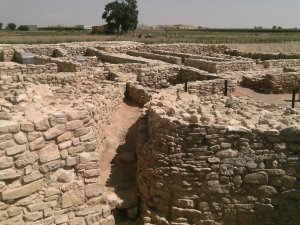
Of course, Christianity was not known back then and the belief in a form of religion was not something that entered a person’s mind. To those people, the mysteries of life remained in the power of the universe. The moon played a large part in their daily lives and the changes in it’s pattern from new to full moon were considered to be magical. For example, holy water was made by leaving a jar of water outside on a full moon throughout the night. It would then be collected in the morning and used for special purposes.
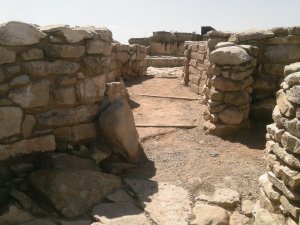
The tribe lived in ranks; the higher the rank the larger the house and the bigger the altar. Each believed in their “faith” though there is uncertainty about whether a high priest or a person in a religious position existed within a tribe.
http://www.carlojvella.blogspot.com
http://www.carlojvella.com
Back to Top
Review: The Spellcasting Picture Book: Visual Tools For Grown-Up Magic 2nd Edition By Diana Raichel
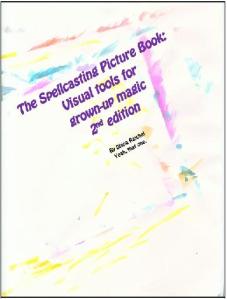
I have to admit that when I first read through The Spellcasting Picture Book, I didn’t find what I was expecting. This isn’t another 101 spells for the busy housewife-esque paperback with a selection of spells for every occasion. If I’m honest, at first glance I wasn’t sure exactly what I was reading.
When I’d finished I flicked back through the book, this time starting with the last page and working my way back to the beginning (a ‘bad habit’ of mine), paying a little bit more attention to what was there instead of what I was expecting. I spent a little more time looking at each page, made a little more effort to understand what I was looking at instead of expecting all the answers to be presented up front.
Diana’s bright, primitive images made me work to get something from them, to find a meaning which I could personally relate to. The images (and I hope you’ll forgive me for saying so Diana) might not be the most polished or perhaps the most artistic, but instead they are honest and heartfelt, a little glimpse at something which feels far more personal than a how-to guide or ‘recipe’ book. This is a book that you have to work at as a reader, but in my opinion it was well worth the effort.
For me, The Spellcasting Picture Book was an inspiration and a reminder; rather than teaching me something new, it reminded me of things I already knew, a simplified and straightforward way of working. When I finish writing this review, I’m going to get out my crayons, my scissors and some glue and get to work creating something of my own. I only hope that the results are as honest and without pretense as Diana’s.
Back to Top
Artwork
By Gaynor Lewis
Gaynor Lewis is a Derbyshire-based artist and writer. Her work includes landscapes, pet portraits and work with a fantasy theme in a variety of media. Gaynor’s artwork is both sensitive and bold, often combining a delicate use of colour with bold lines and delightfully intricate detail.

In Sleepy Oaks Woods by Gaynor Lewis as Fearneve
In In Sleepy Oaks Woods, an Autumnal and almost desolate background is offset with a splash of colour to create an enchanting otherworldly effect. The boldness of the lines bring to life the subtle shades whilst the tentative and organic outlines of the grass, leaves and mushroom are beautifully complimented by the curves of the door and windows.

The Green Man by Gaynor Lewis as Fearneve
Of all Gaynor’s pieces, The Green Man is one of my favourites. With a few simple lines, the she has created an image with a great deal of character and charm. The softness of the eyes contrasts beautifully with the crisp texture of the leaves and twigs and the deep shadows create a depth which suggests the furrows and lines which come with time.

Castle Glimpse by Gaynor Lewis
Castle Glimpse captures perfectly the beautiful contrast of the natural and the man-made. The castle Gaynor has chosen to paint, Dartmouth castle, watches over the calmness of the waters almost like a sentry and yet the painting has an almost overwhelming serenity to it.

Higher Lodge by Gaynor Lewis
Again, like Castle Glimpse, Higher Lodge uses a contrast between natural landscape and architecture to create a poignant and beautiful painting. The bold lines of the cottage in the distance contrast with the gradual shadows of the bushes and tree to create a stunning but peaceful effect.
More of Gaynor’s work can be found at http://www.gaynorlewis.com/ and (for her fantasy art) http://www.fearneve.co.uk/.

Back to Top
Decorated Skulls By The Pagan Friends Forum’s Tas Mania

Goat Skull With Acrylics

Deer Skull With Acrylics

Sheep Skull With Acrylics
Back to Top
Lucy’s Tale
By Logos Tartaros
Lucy woke up in a bed of grass on a warm summer day. She knew she was in the place she was supposed to be, after her long journey. She knew this was the place she would never leave, and if she were human she would probably realize that she was in shock, and dying.
But being a cat, an especially old cat, has its advantages. And now, all she was aware of was that she was simultaneously sinking into the ground and, and at the same time, floating away. Things seemed to be brighter and Lucy was about to jump into the light coming for her when she heard a man’s voice.
It was a soft voice that settled over her and insulated her from the light; which paused, and spoke back to the man in deep tones that Lucy could feel in her bones. The light receded and Lucy was aware of the grass tickling her side, her tired shoulders, and sore pads that were caked with the blood of her long walk. But more than anything, Lucy was hungry.
The heat from the man’s hands, which was strangely warmer than the summer sun beating down on her, helped Lucy raise her head so she could lap at the milk in the saucer in front of her. The taste of the milk and the warmth on her fur stirred a memory in Lucy. She lapped greedily and then slowed as the memory tugged her into unconsciousness.
Lucy dreamt she was small, and with her first owner. She lapped at milk from a large spoon that was offered to her by a small girl. Lucy cleaned the spoon, and the little girl picked her up; instantly they were outside; walking in a garden.
The kitten clung to the little girl as the sounds, smells, and sights enveloped them. Curiosity got the better of Lucy and she bravely crawled up the little girl’s arm and perched on her shoulder. The sounds went silent and the little girl stopped. Lucy’s fur fluffed on her tail and eventually, her entire body; her claws reflexively dug into the little girl’s shoulder, who flinched.
The little girl was also startled by the garden’s sudden silence. Something was there, with them; but the little girl couldn’t see it. Lucy, could. It was a very tall woman swimming in black clothes; her eyes focused on the little girl, but the woman called out to Lucy.
The kitten went limp and fell to the ground. The little girl squealed and went to reach for Lucy; but Lucy rolled away and after finding her feet went to chase the woman the little girl couldn’t see; beckoned by the voice the little girl couldn’t hear.
The voice called to Lucy through the brush, while the little girl pleaded for her kitten to return. As she ran, Lucy could hear the little girl in the brush behind her; but the kitten couldn’t stop and scurried as fast as she could through the underbrush.
The woman, swimming in black clothes, was waiting in what looked like a clearing. Lucy bound for the woman, but the ground disappeared from under her claws. Lucy rolled, uncontrollably, to the bottom of a shallow ravine. Startled, Lucy mewled, only stopping when she heard the scream of the little girl; who fell into the ravine beside her.
The little girl gasped for breath from the wind being knocked out of her, and then froze; for she could now see the woman swimming in black clothes, hovering above her, and descending.
The black clothes never touched the ground as the woman bent over the little girl. The woman’s outstretched pale hand covered the girl’s mouth ending Lucy’s first owner’s life with a brutal calculated swiftness.
Back to Top
Apple Time
By Joan McNerney
Red yellow brown carpets
of crunchy leaves spread
out to welcome you.
You are coming home to aromas
of cinnamon and me. I’ve been
waiting so long
to touch you
feed you
juicy apples.
Finally you are here.
Red giant stars
growing
our names
glowing
in neons
for eons.
Back to Top
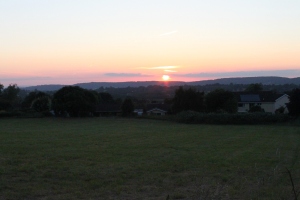
Pink Skies by Cai Thomas
September Song
By Hedgewizard Erb
The September sun comes dancing across the land
Golden month, peaches and corn, fairs and school
The beginning of autumn, sunflowers bow their heads
Soon the rains and winds will echo winter and a new year
Beginnings, endings, golden rays before the colors of October
The great wheel of life turns and we all go along for the ride
When I was young, before computers, I would look forward
To a new pencil box, comic books, new things in school
September was a new start, we collected nature things
Watched the sun go down over the Pennsylvania hills
And drink coffee and eat crumb cakes for breakfast
Savoring everything in between day and night
The silver full moon shown over the rooftops, a glow
Would light up the early evening with its own magic
And we were all in awe of the world in September
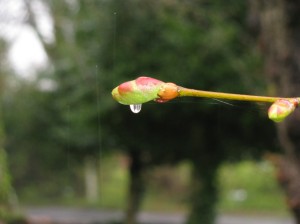
By Nik
Back to Top
The Sock Puppet Poppet
By Rebecca L. Brown
Into this sheathe, her sheathe
She has sausaged five fat toes
Haired and sweat-salted
Still grimy from the kitchen floor.
A stray hair caught between the fibres
Calloused skin rubbed free by a too-tight boot,
Unwashed, unclean, the fabric holds her scent
Bittered and foul, ground in by time.
The toe becomes her crook-pointed face,
The heel the overstuffed curve of her pimpled arse,
A tuck here, a stitch there
Threading in intent, drawing out her essence,
Until her face stares back at me
From a patchwork of new stitches
And old, pressure-worn darns.
Then all that is left is to slip my hand inside…
Back to Top
A Deserted Place
By Linda Gibson
This looks like a deserted place
But there’s life under the surface
If you take look again
There’s a spider on the window pane
Her webs are scattered all around
It teams with life on the ground
At night there’s the squeak of mice
Beneath rotting stumps crawl woodlice
Over loose rubble beetles scurry
To unknown destinations they hurry
The floor’s been reclaimed by weeds
On which a lone honey bee feeds
It’s not really deserted you’ll see
Just take a closer look, like me.
Back to Top
Butterfly
By Linda Gibson
Graceful Butterfly
Oh, so beautiful colours
As you flutter by.
Back to Top

